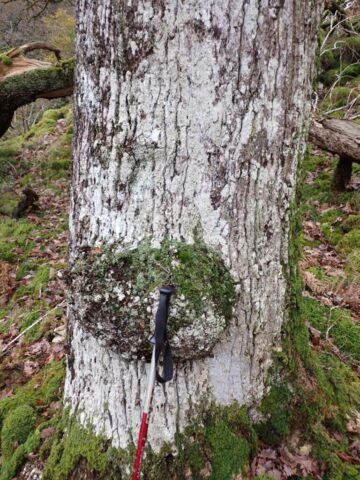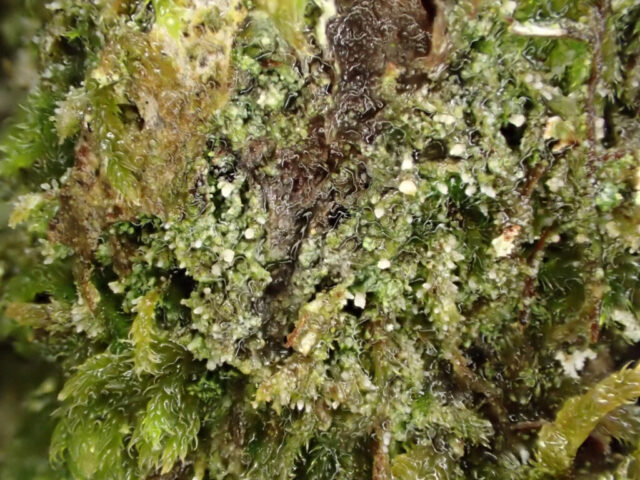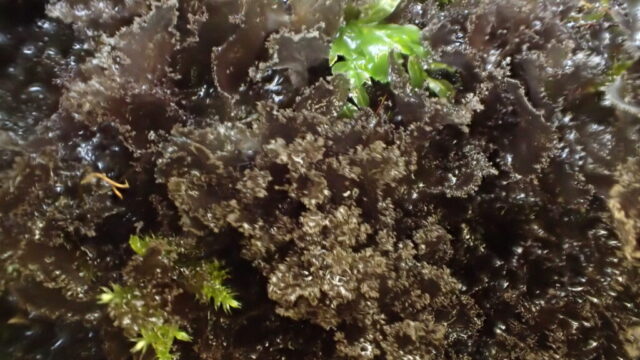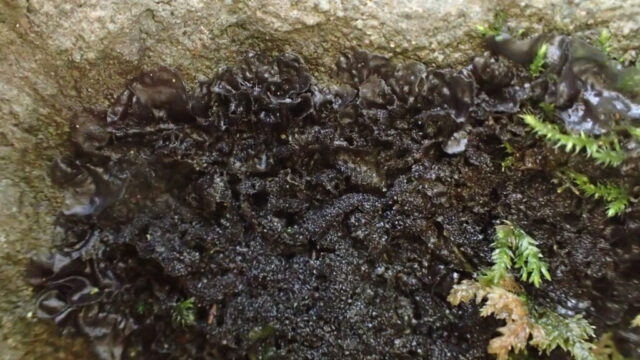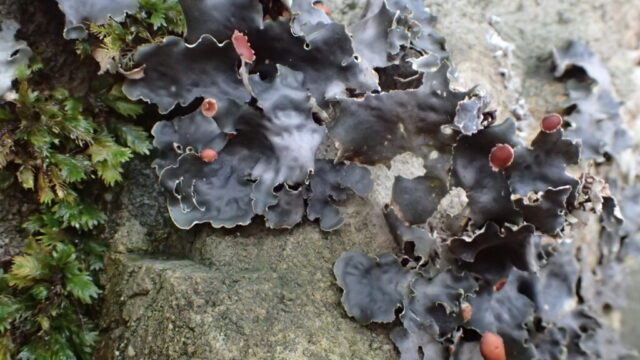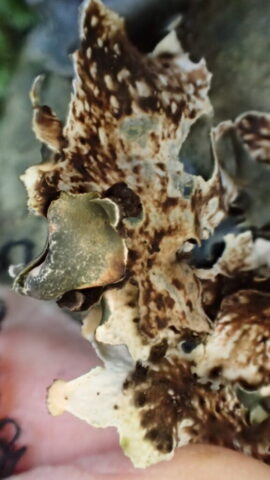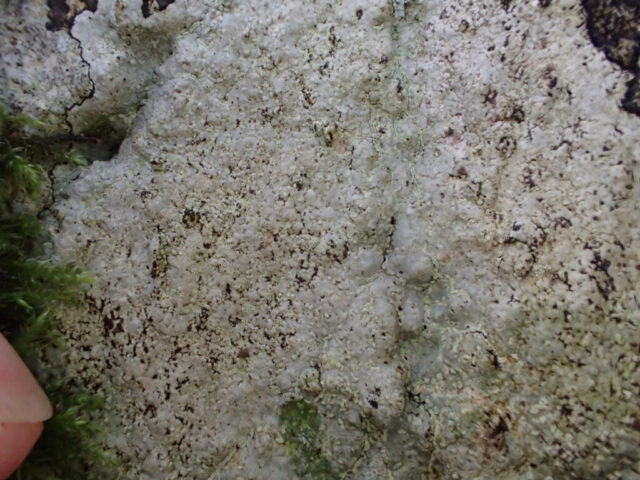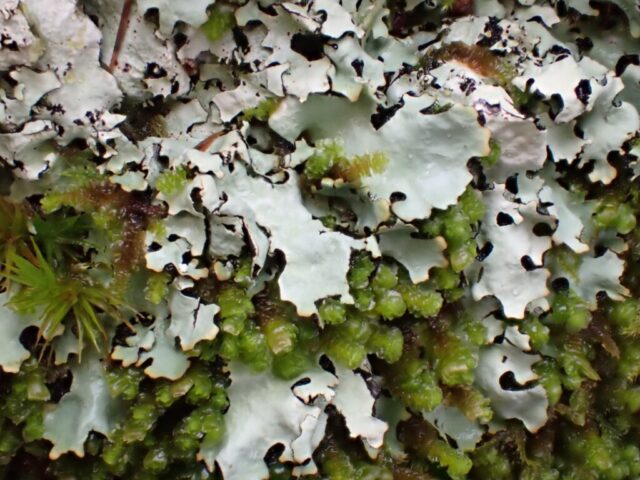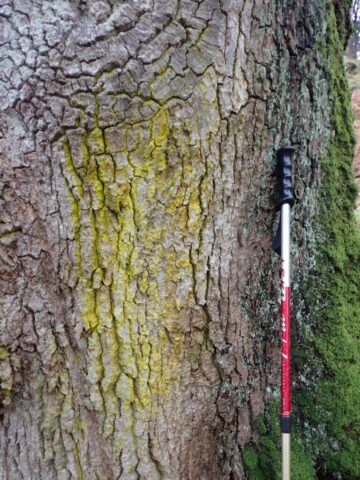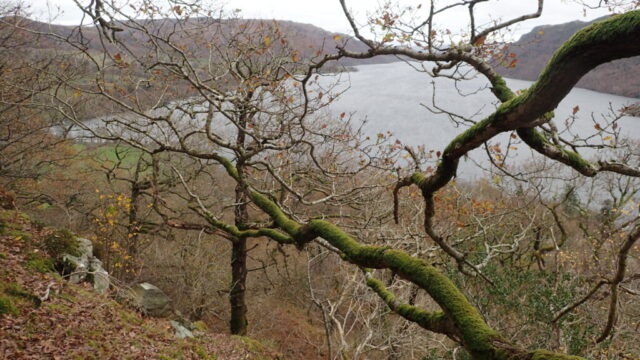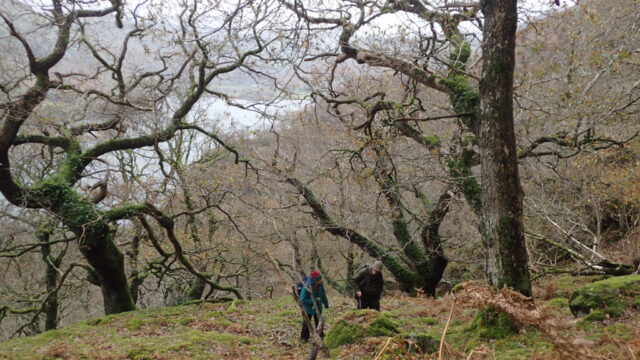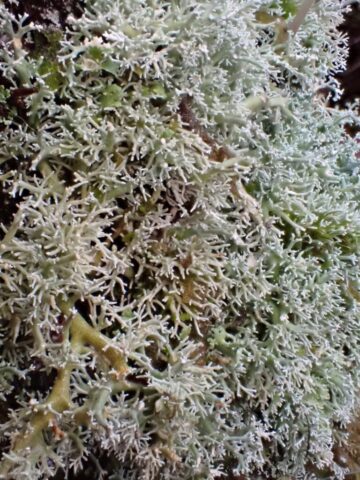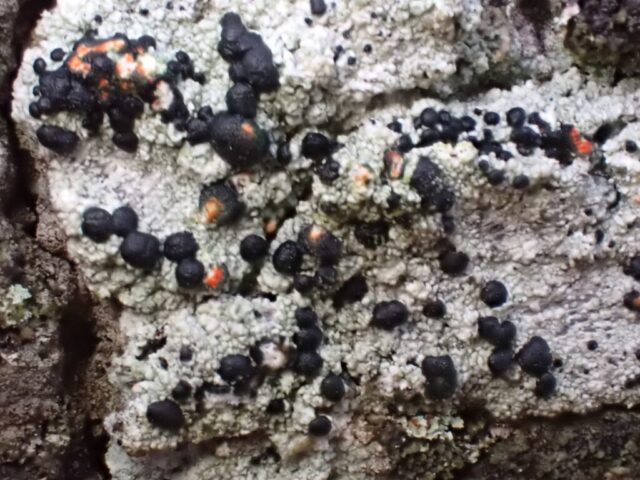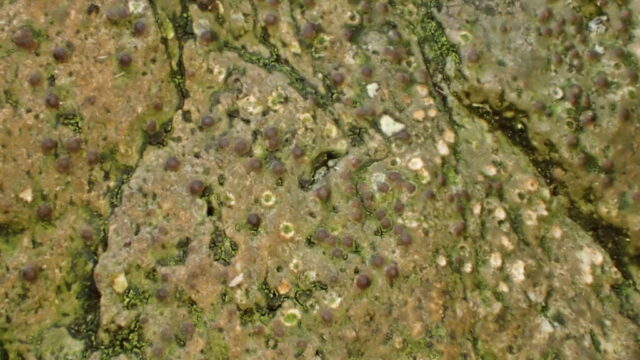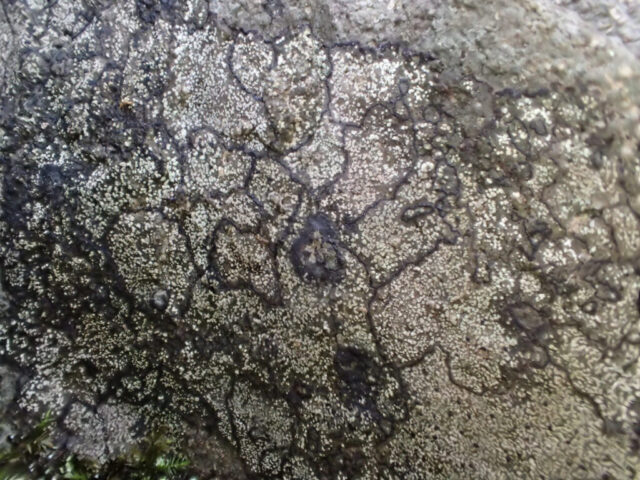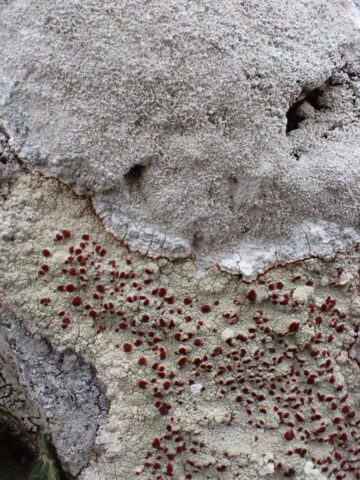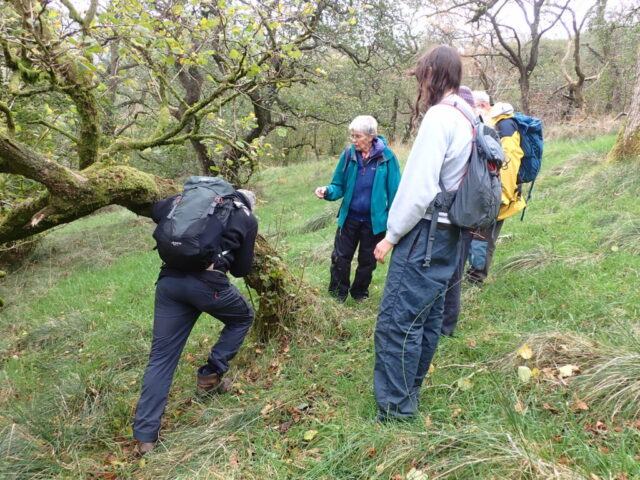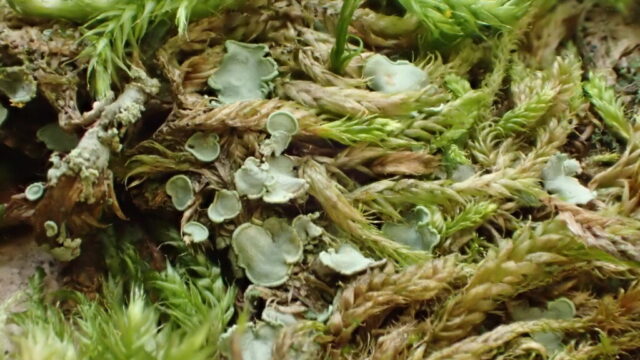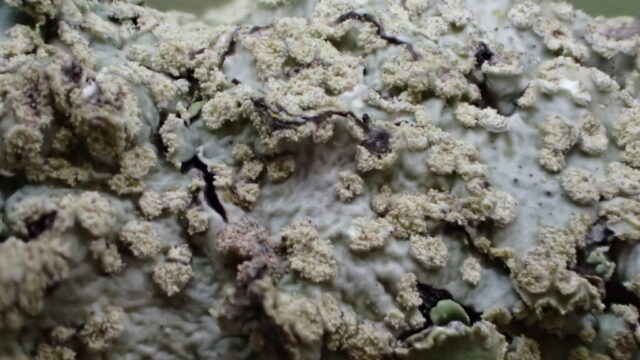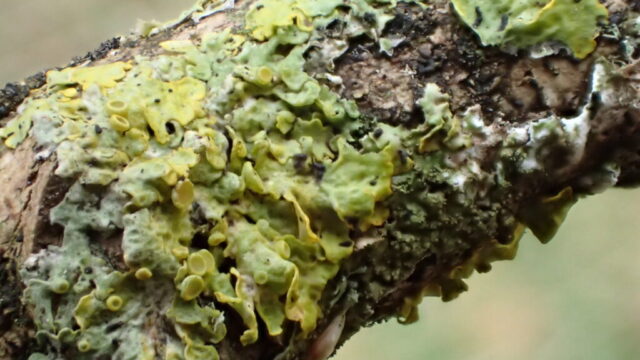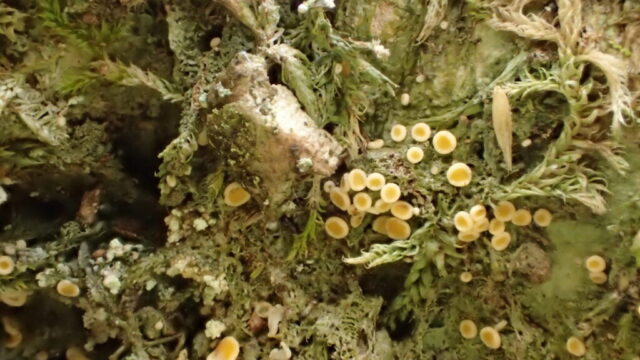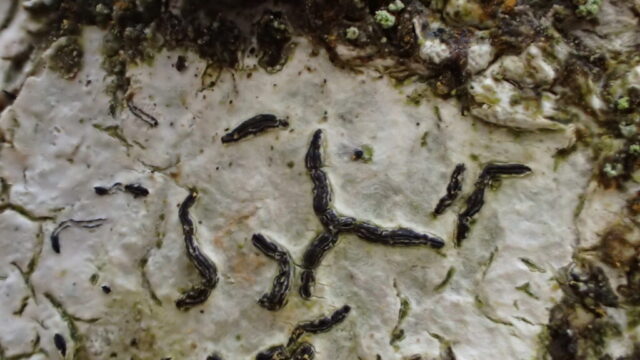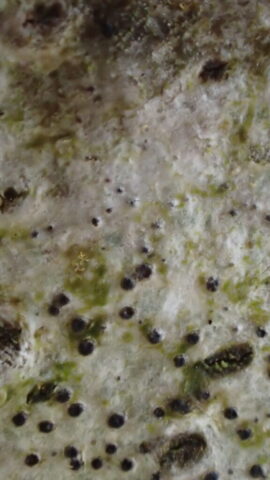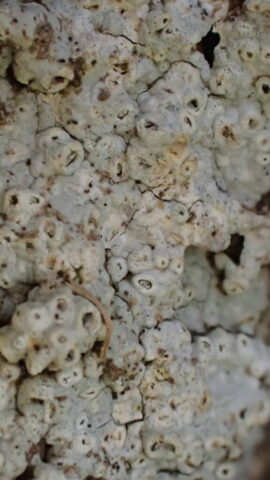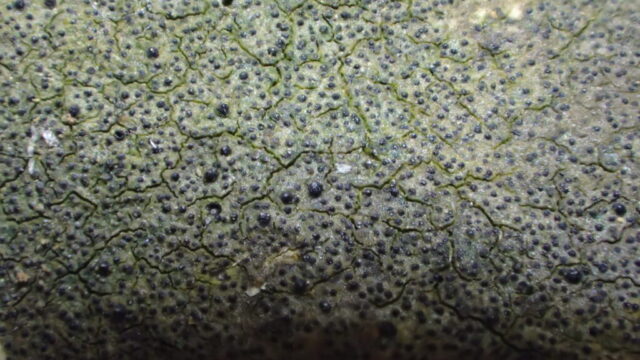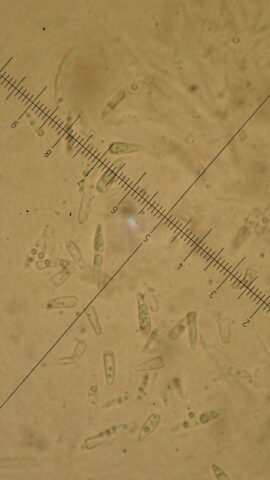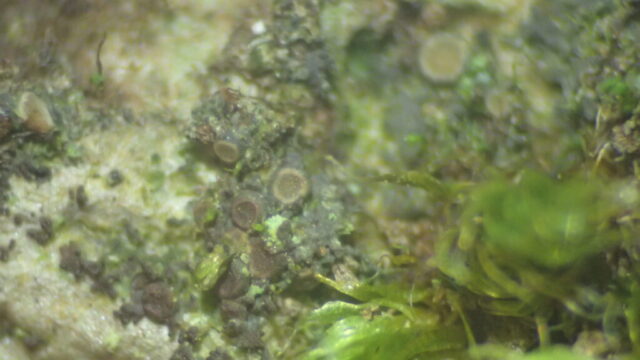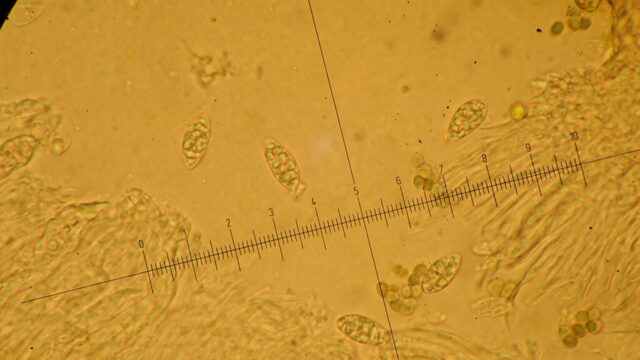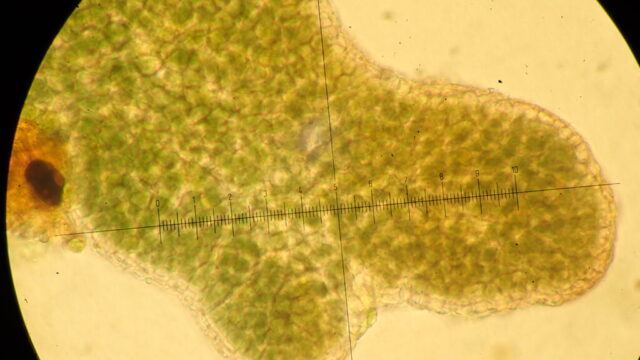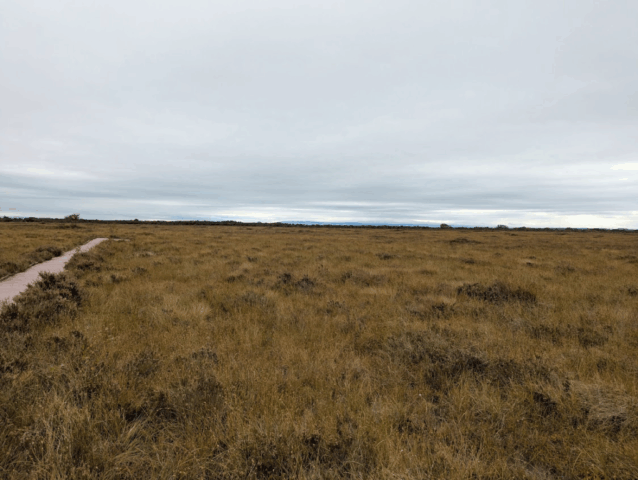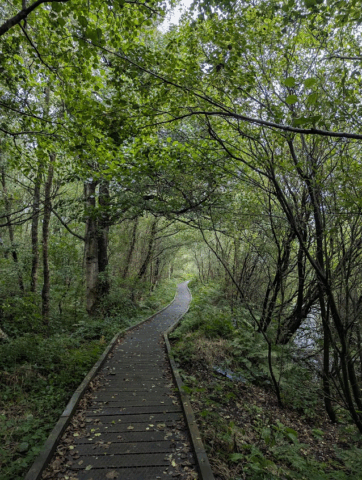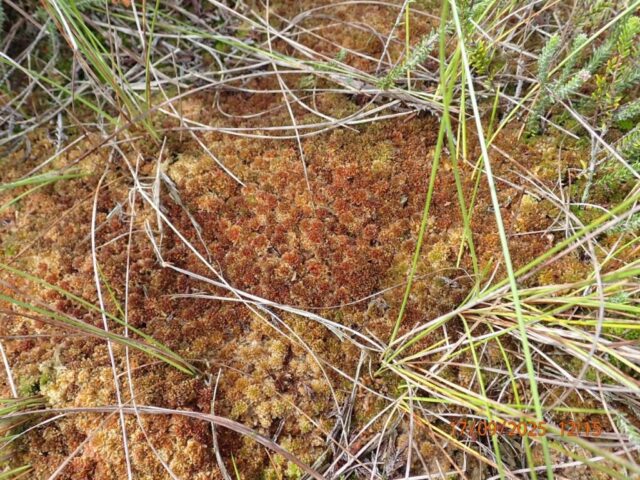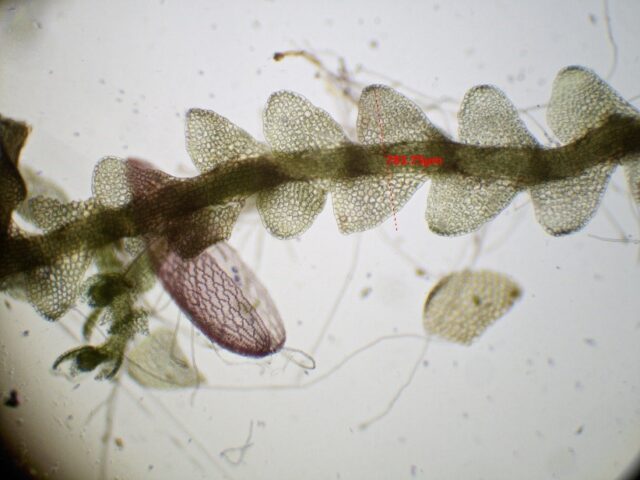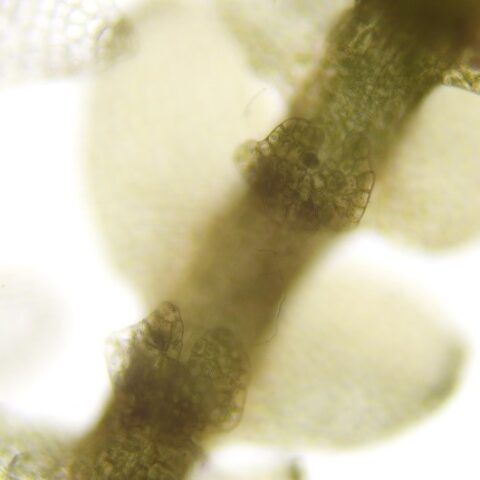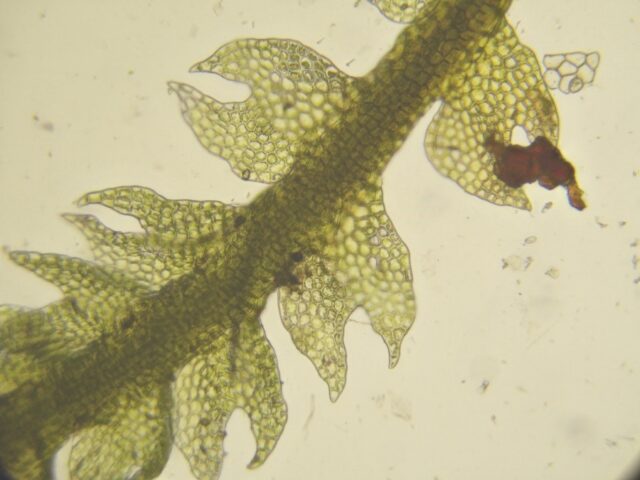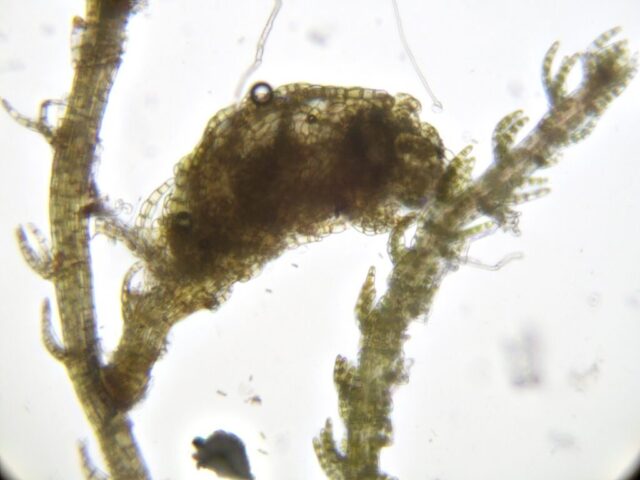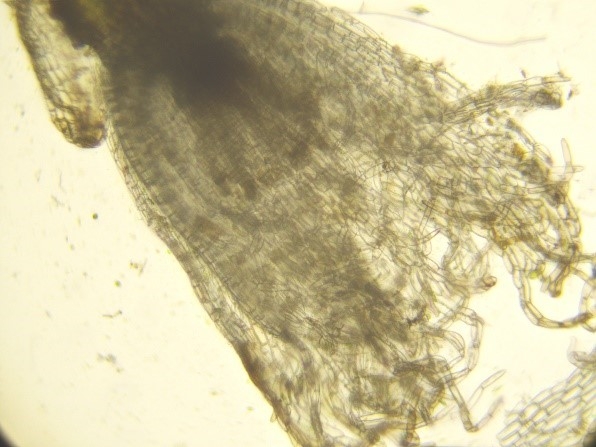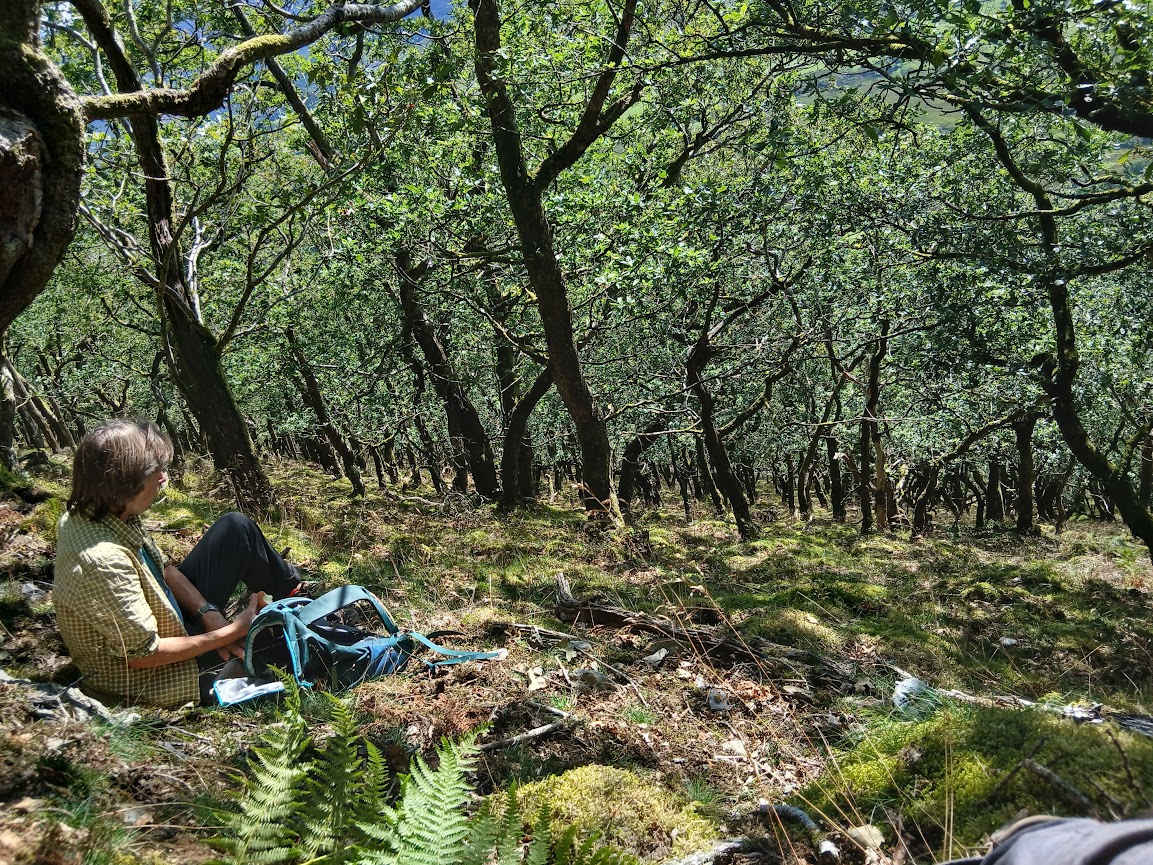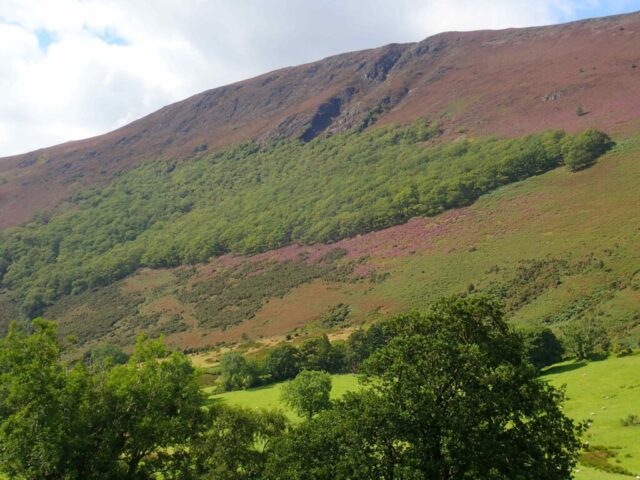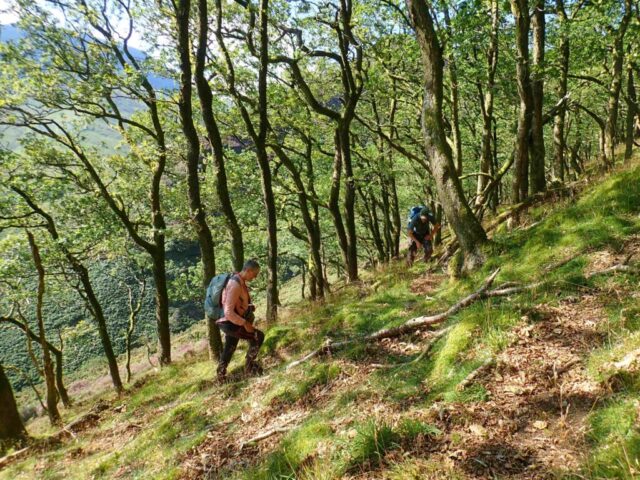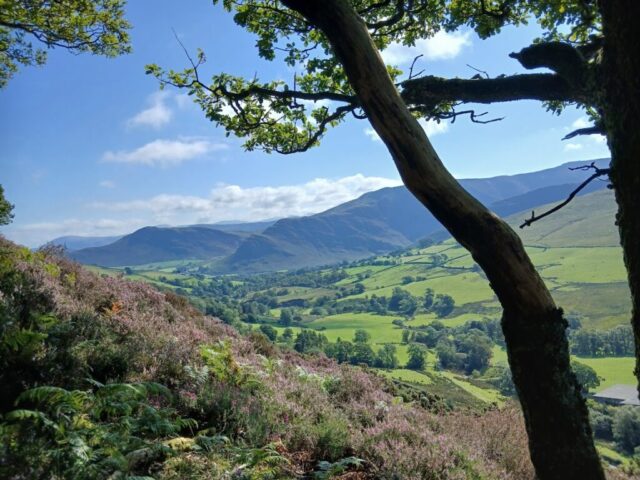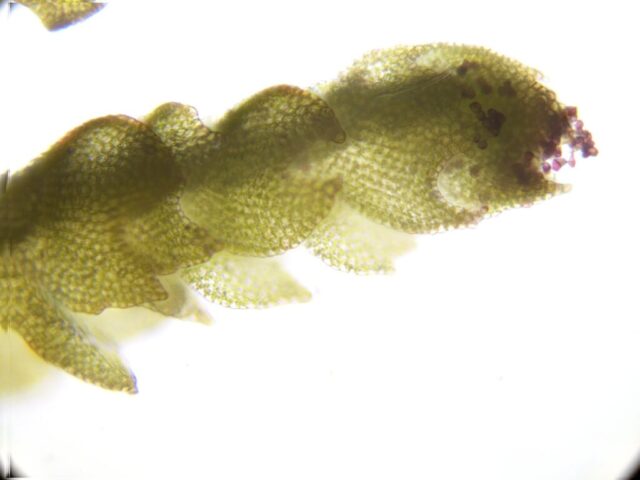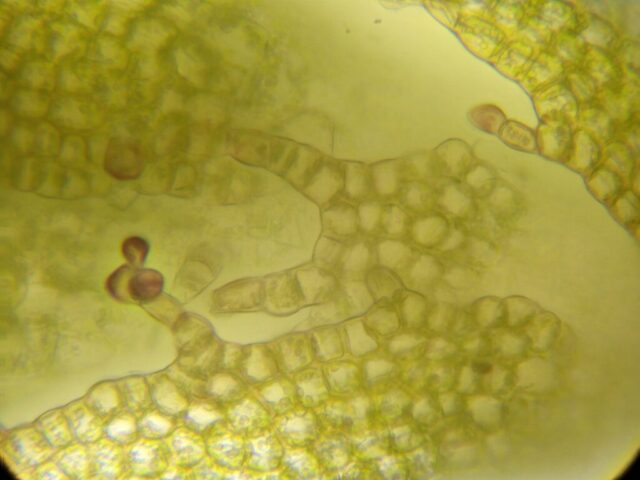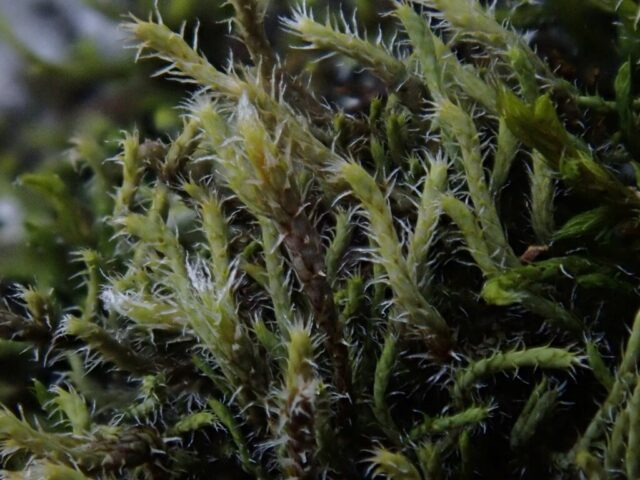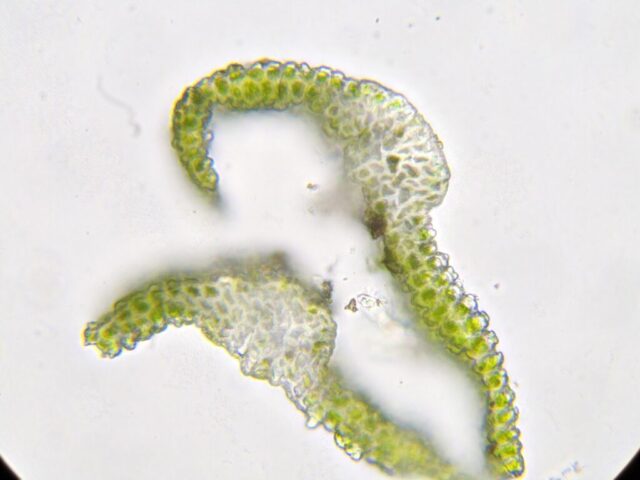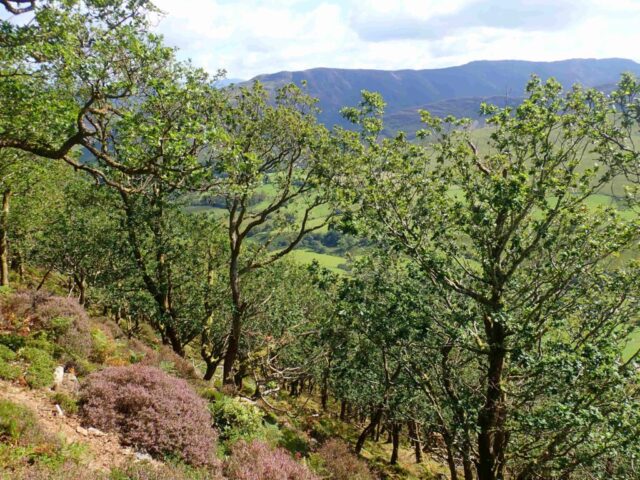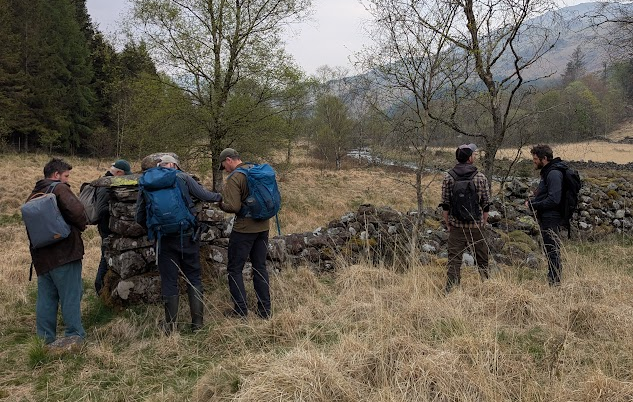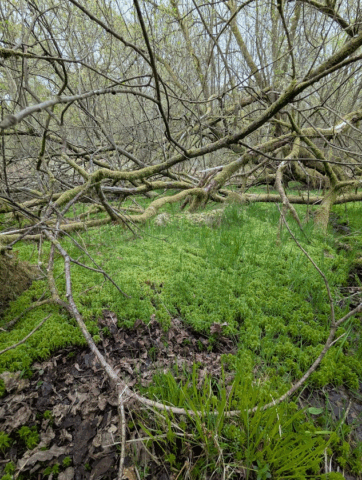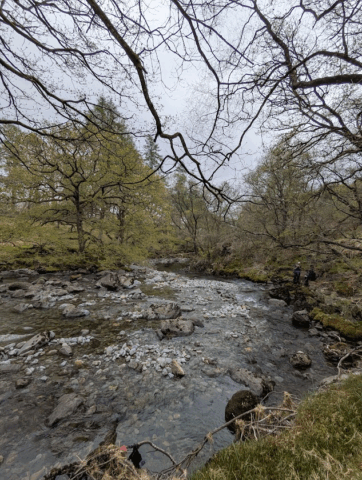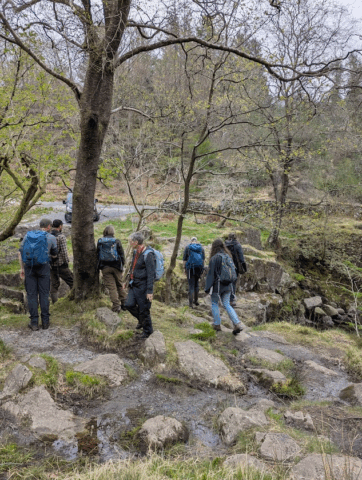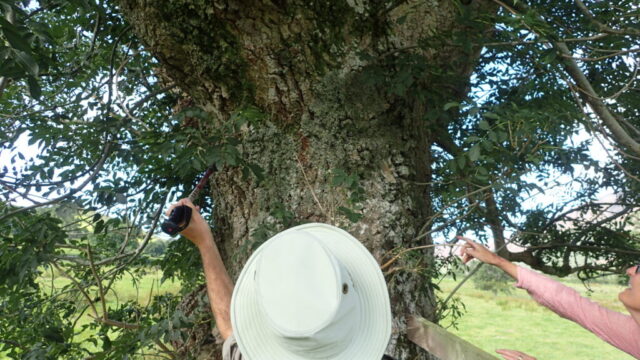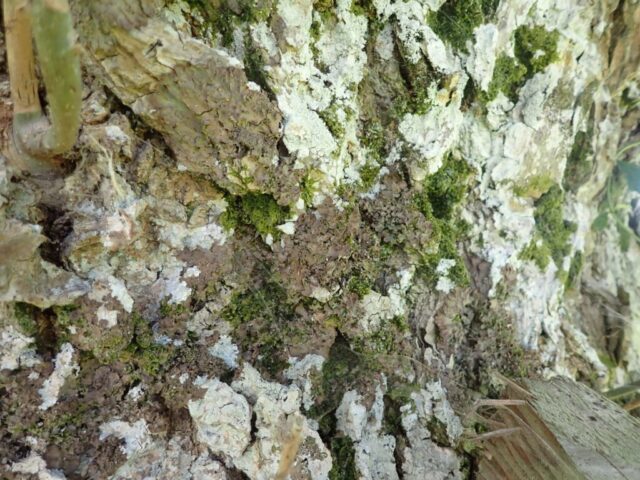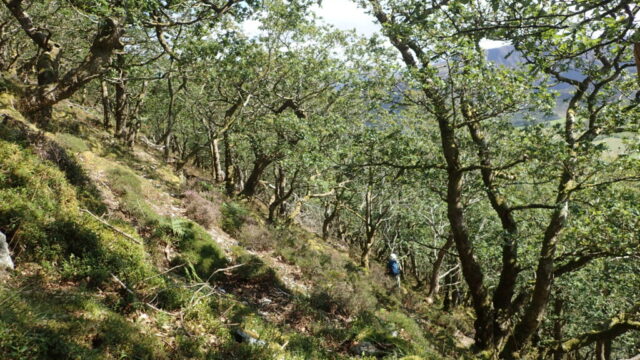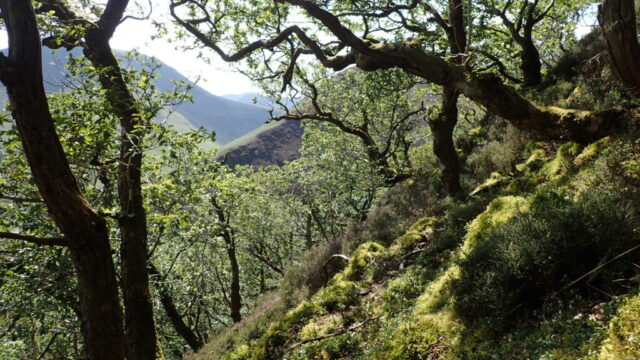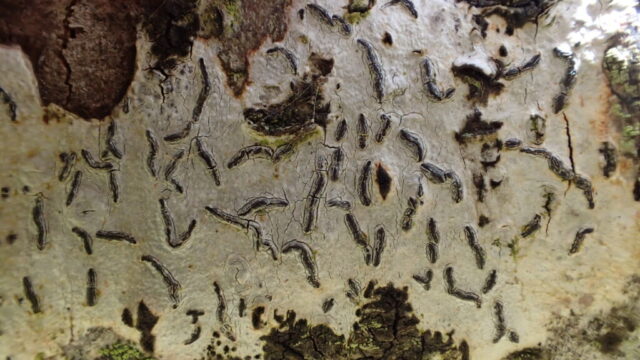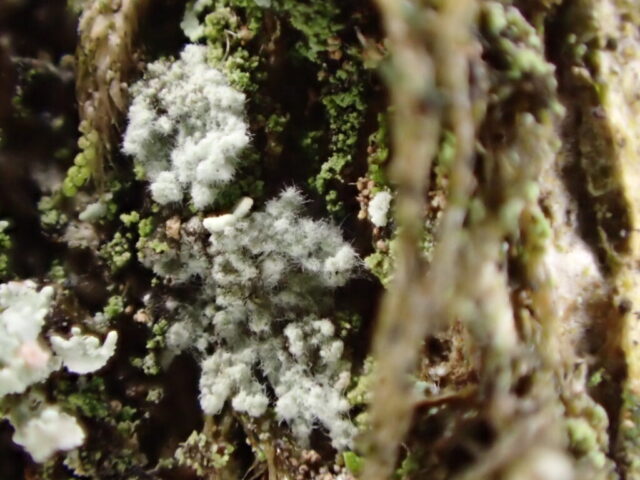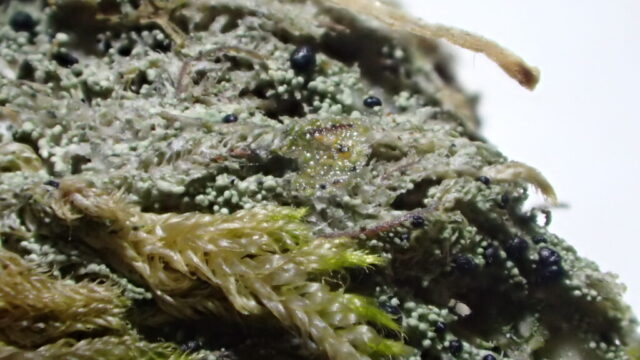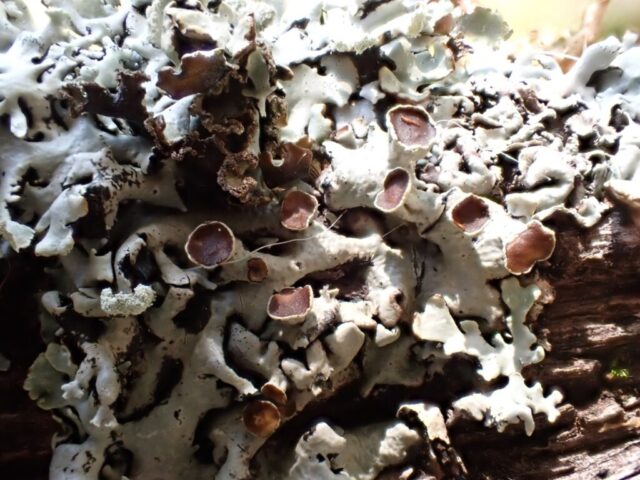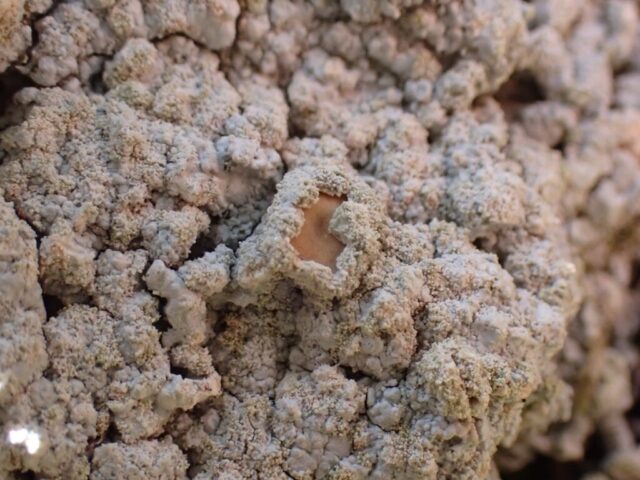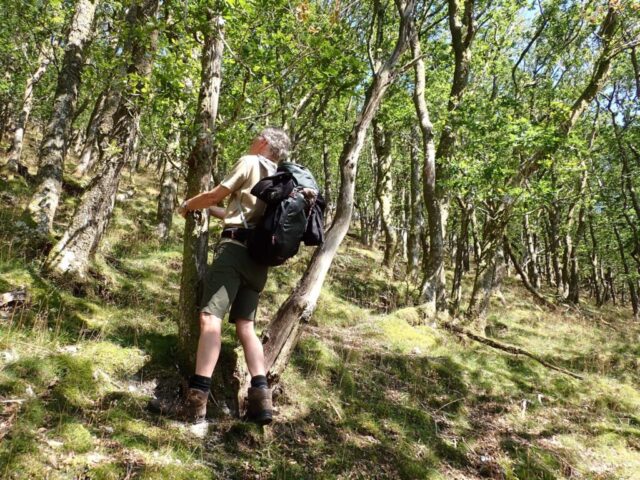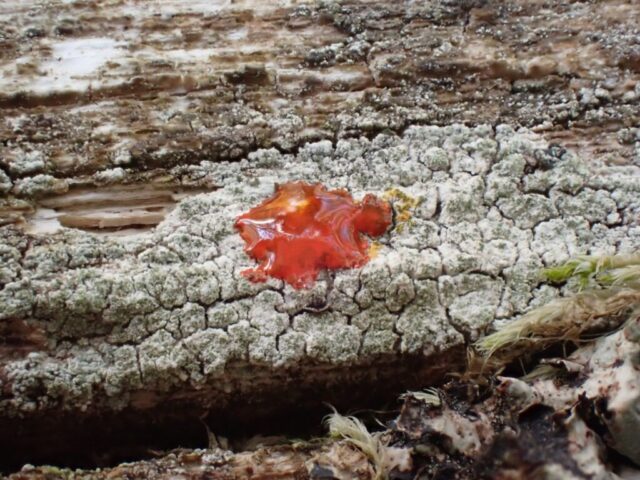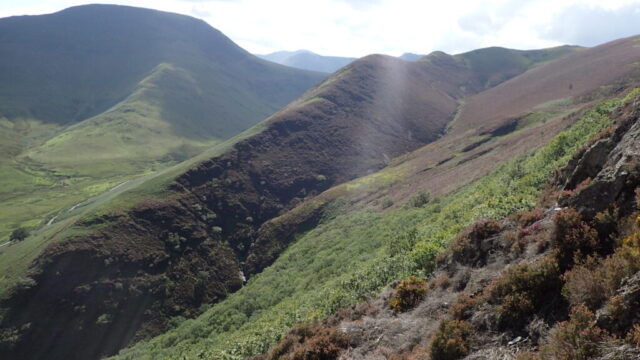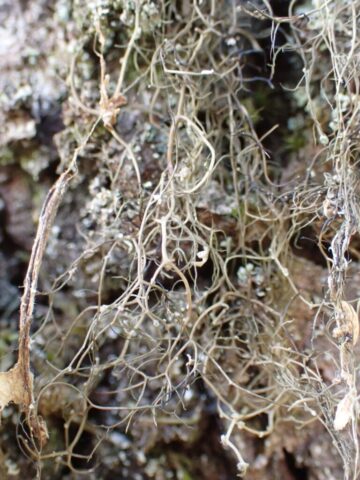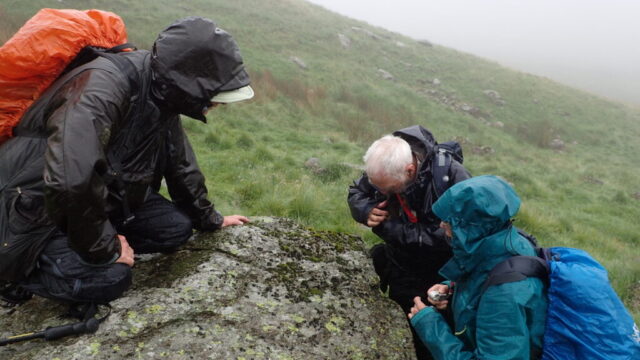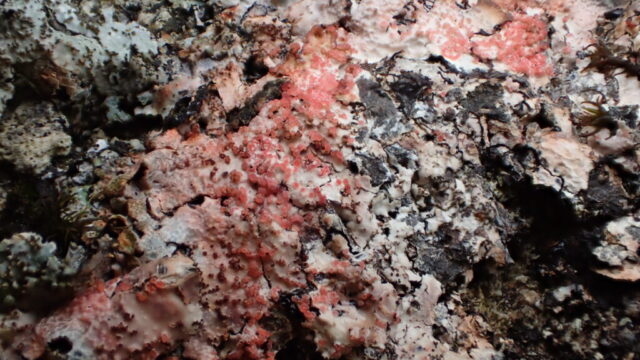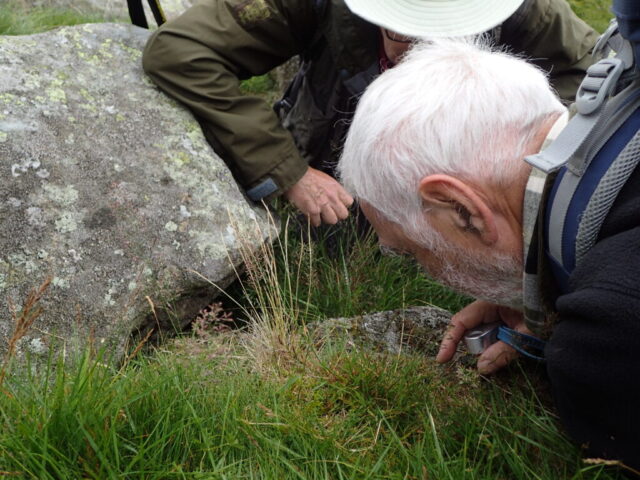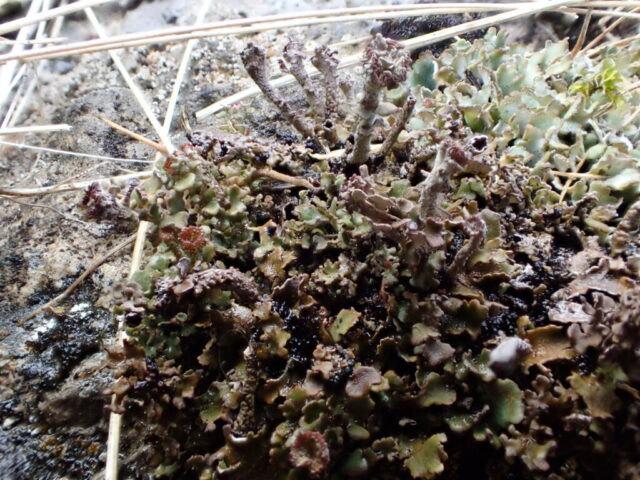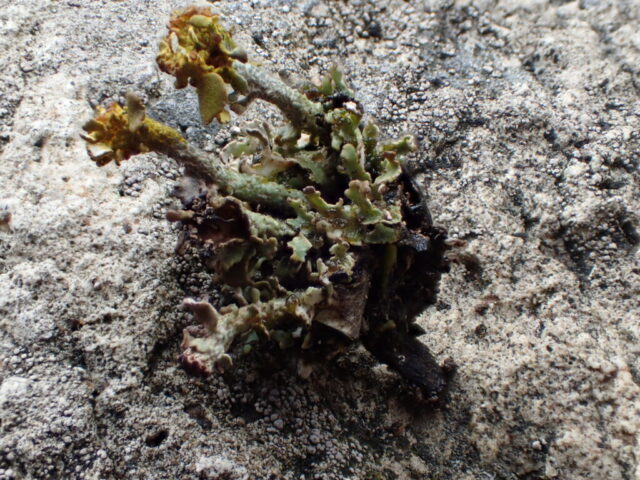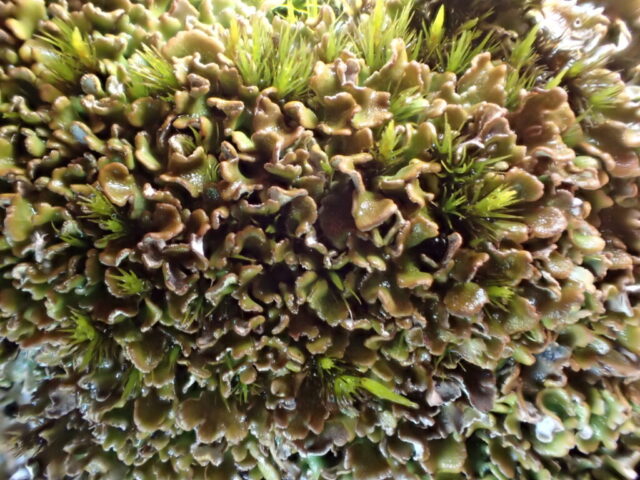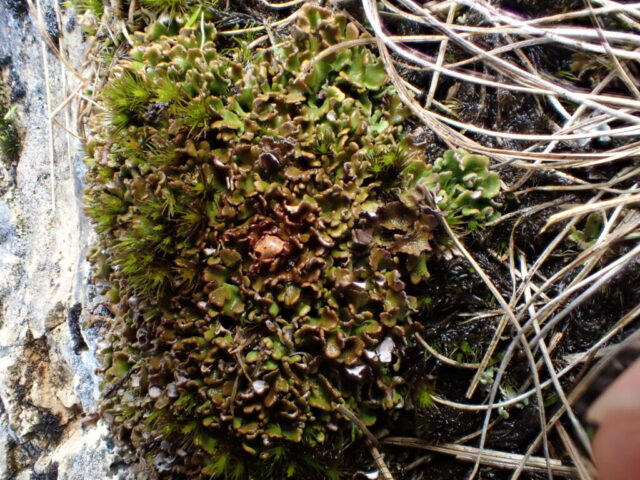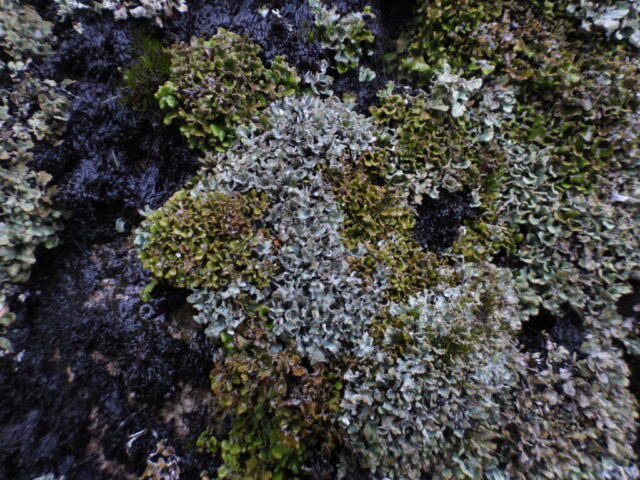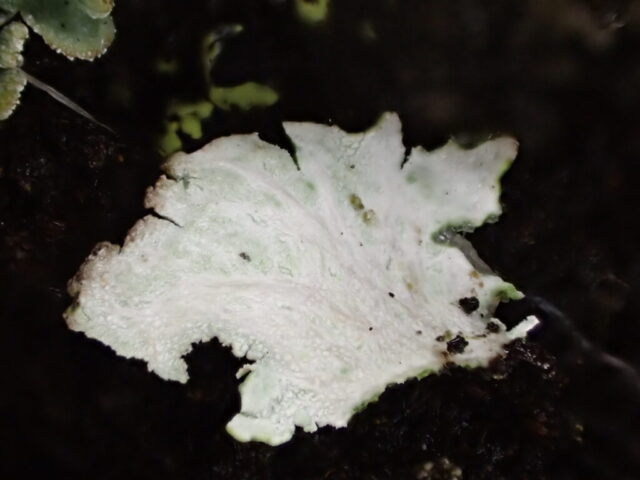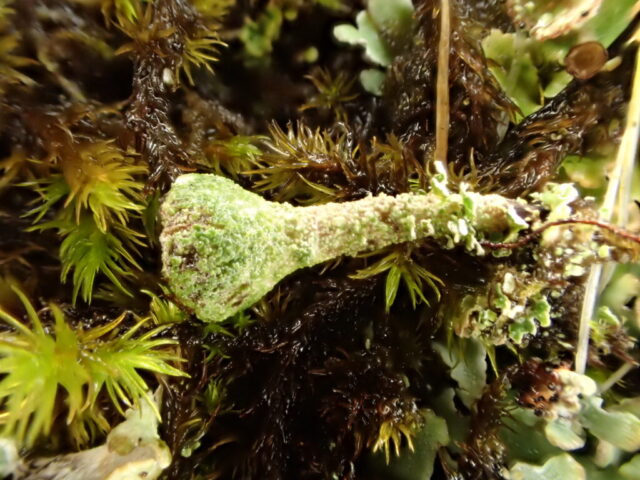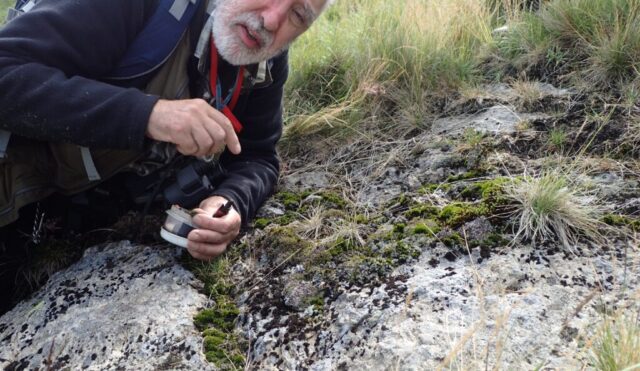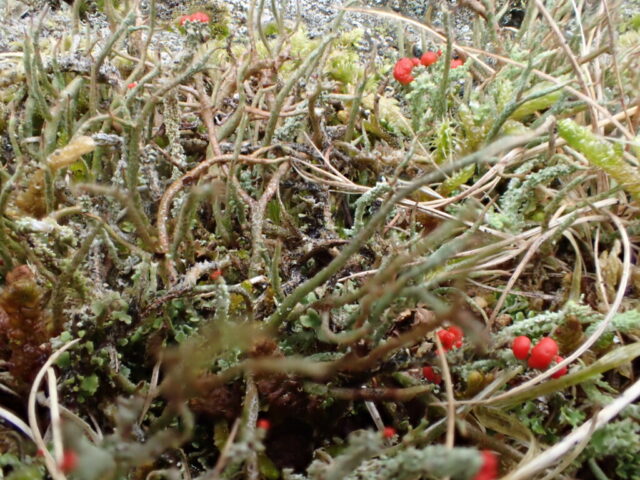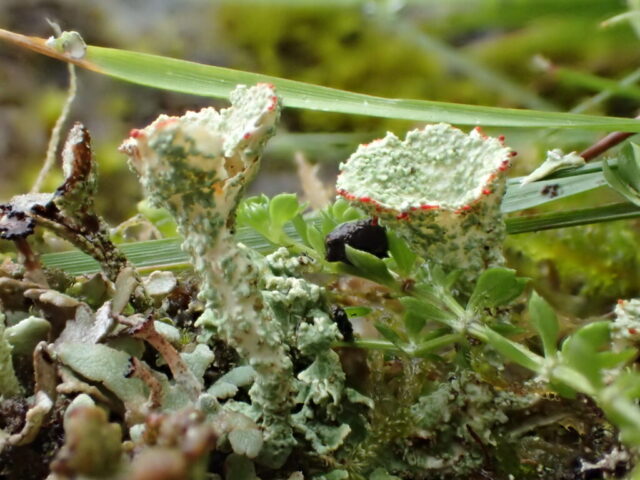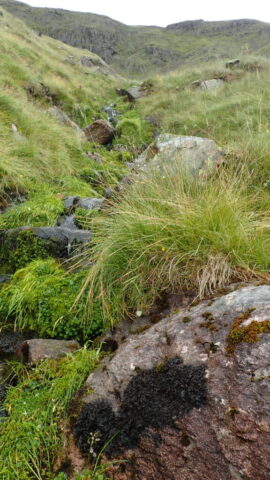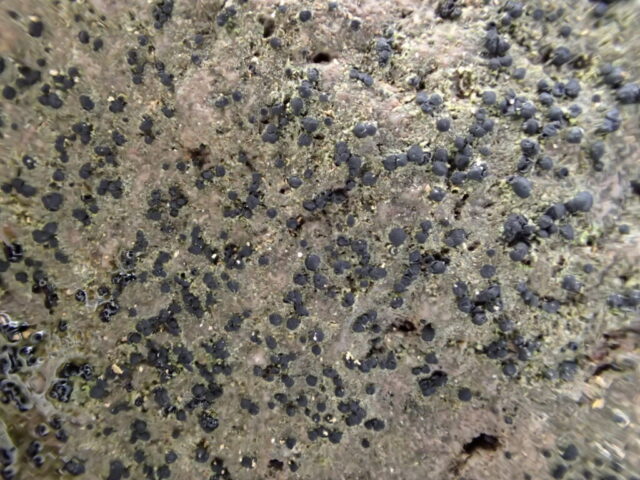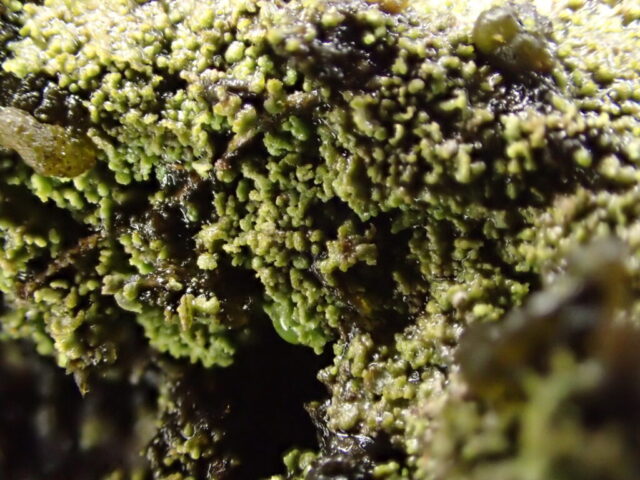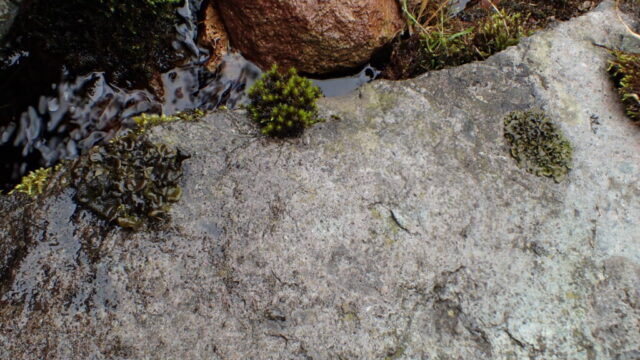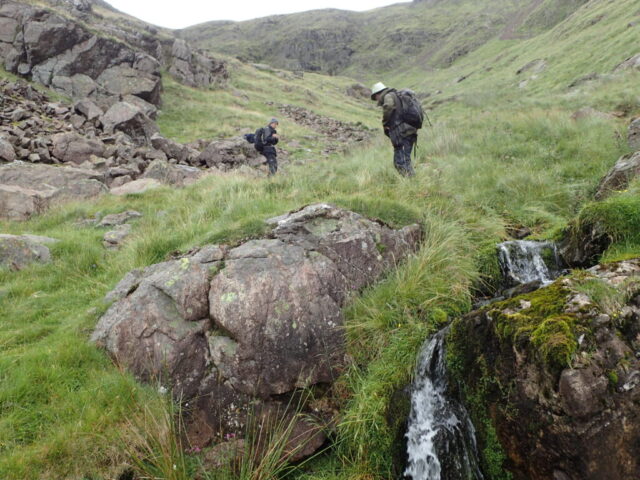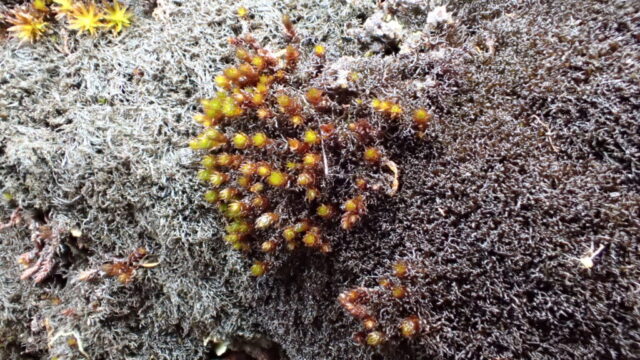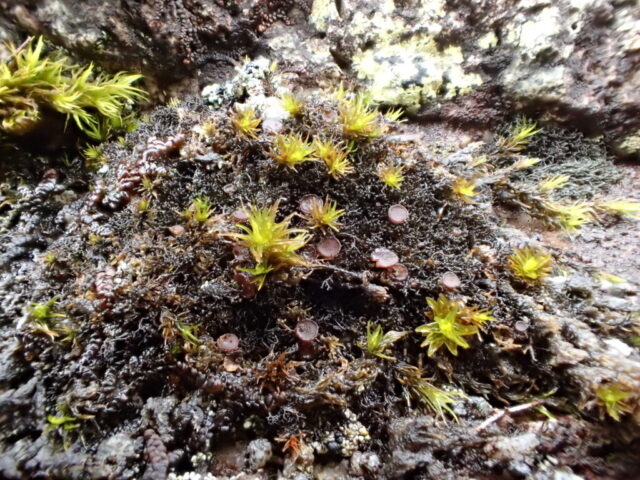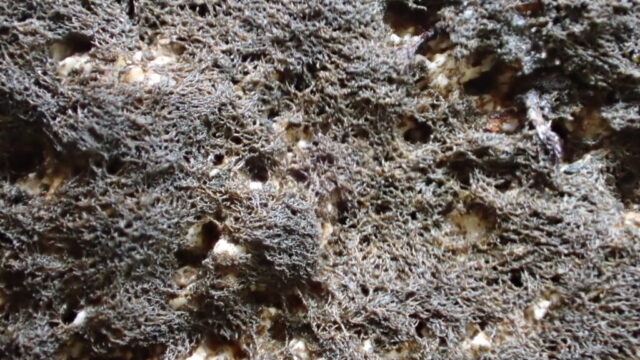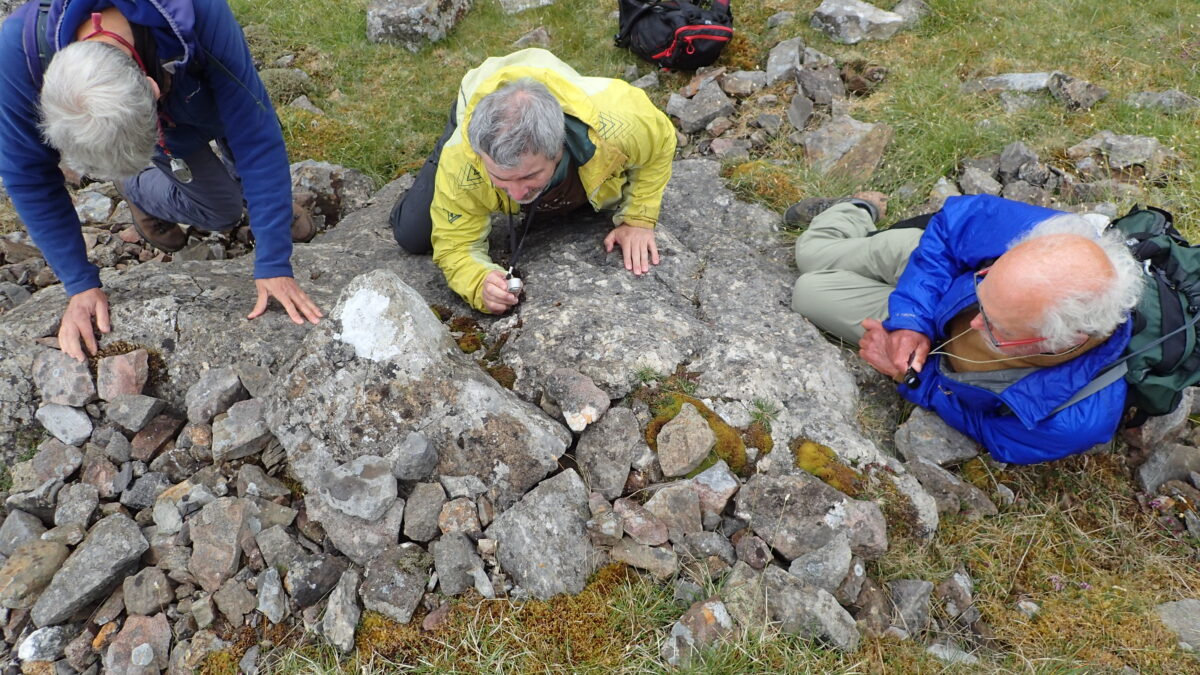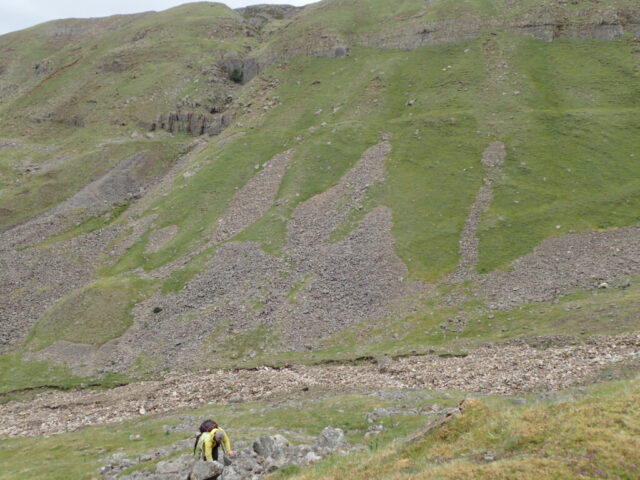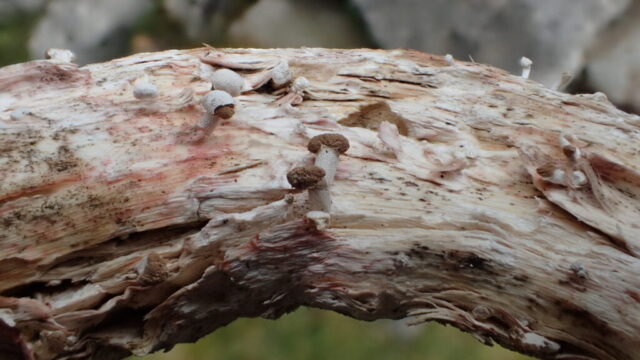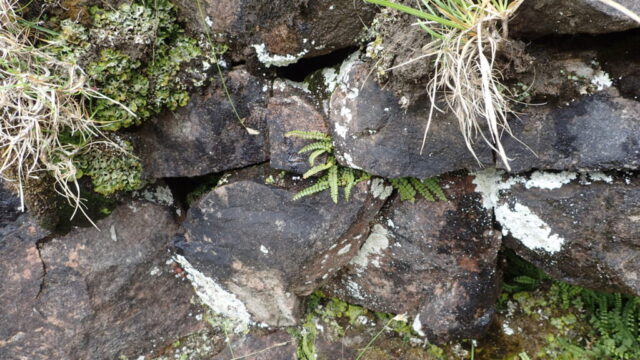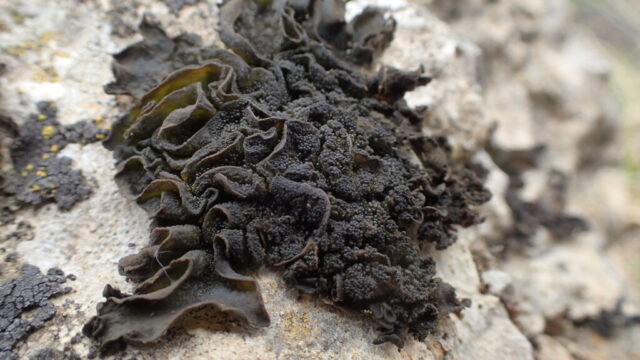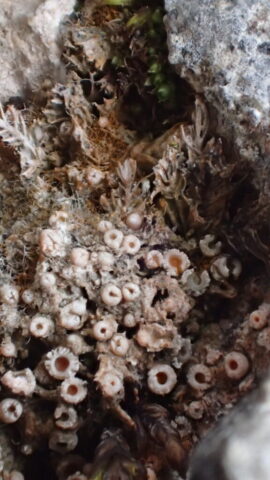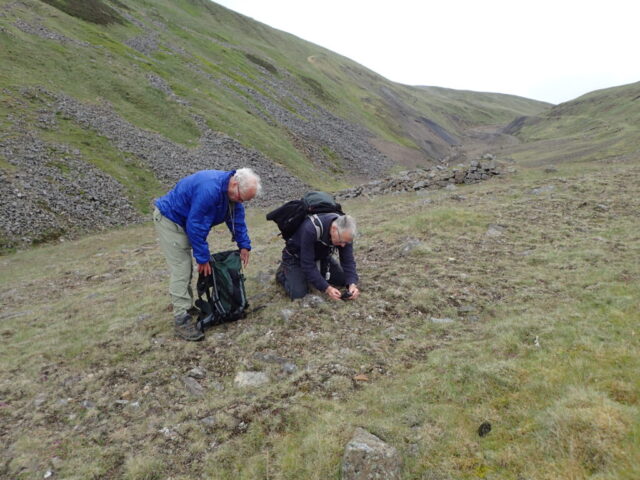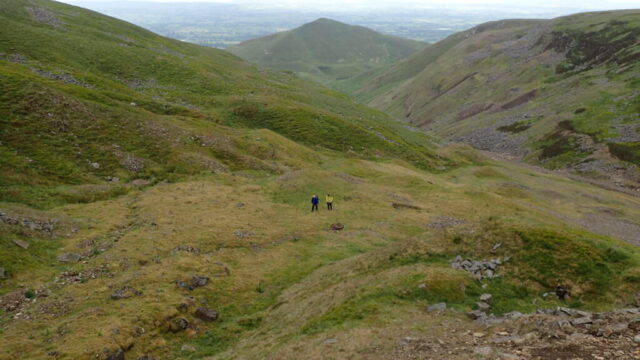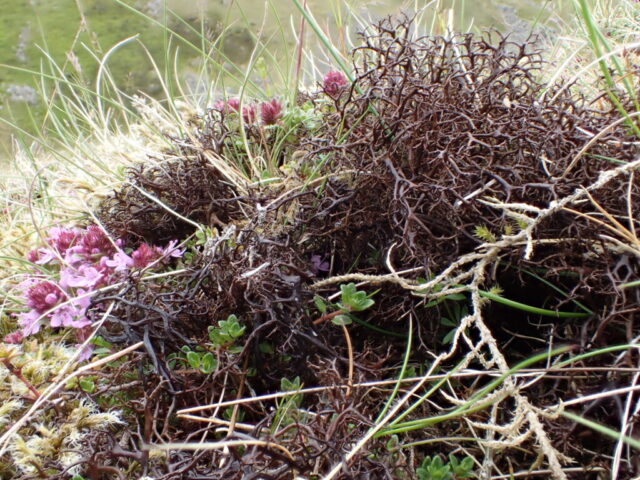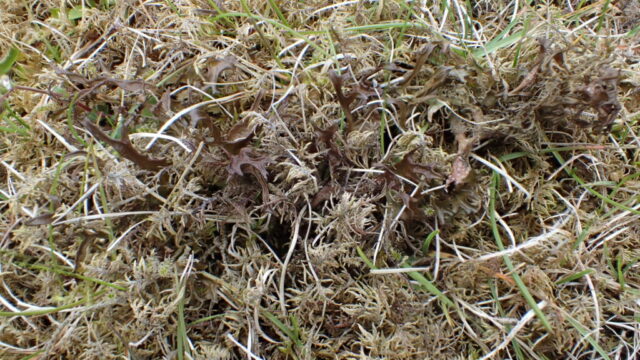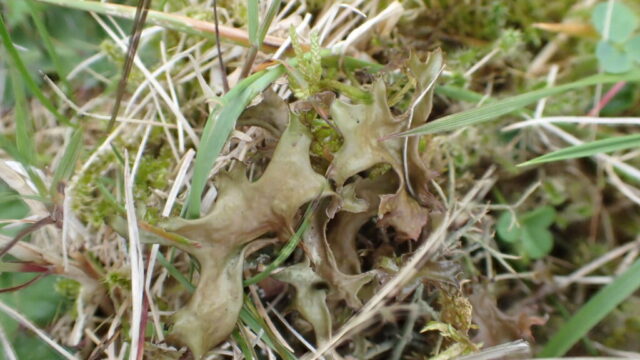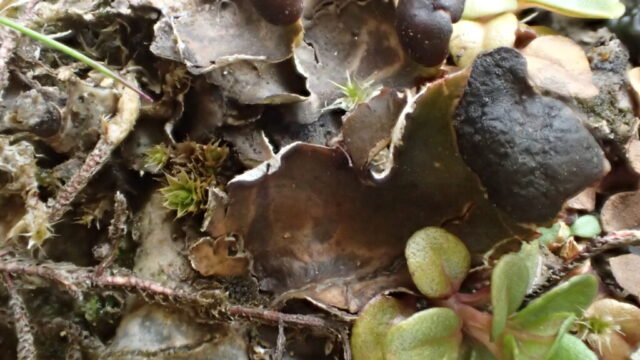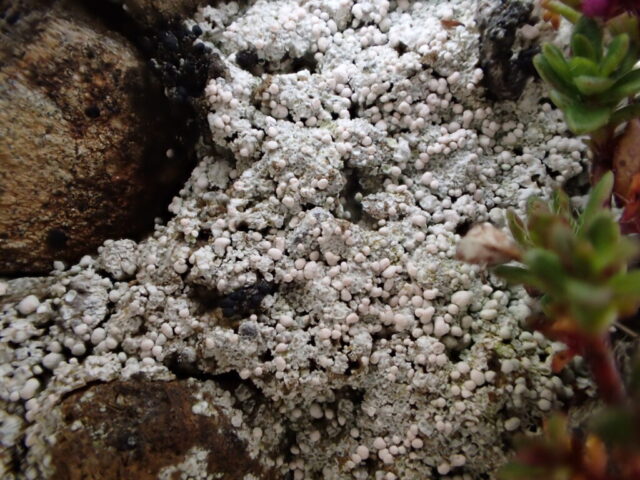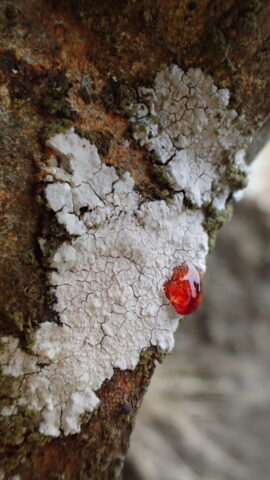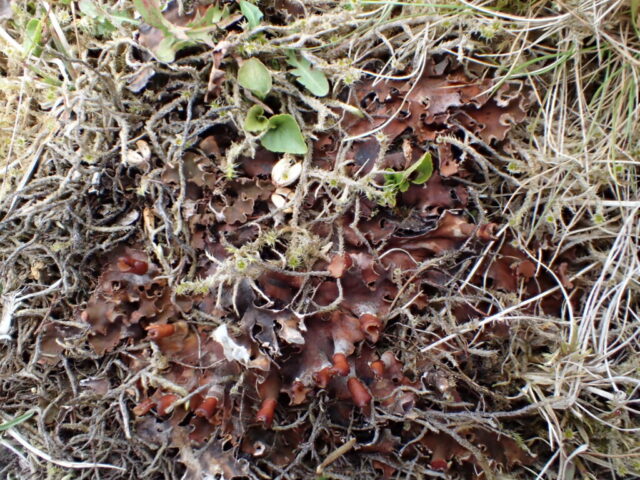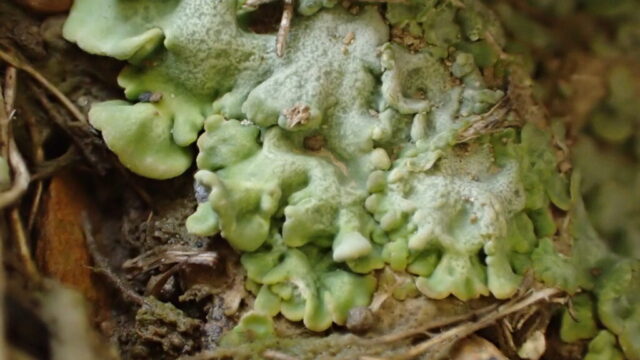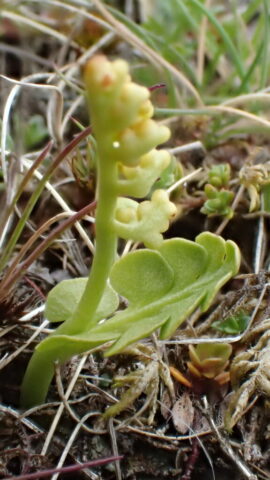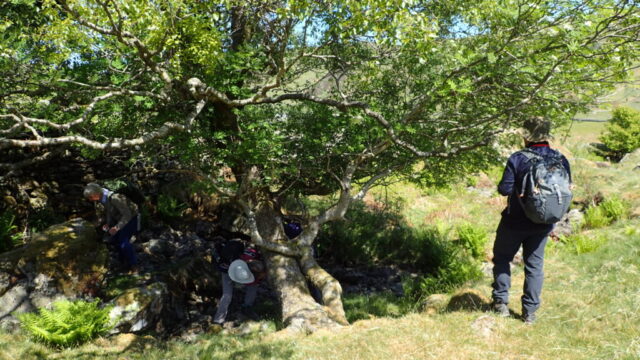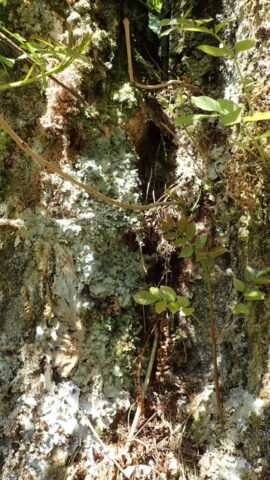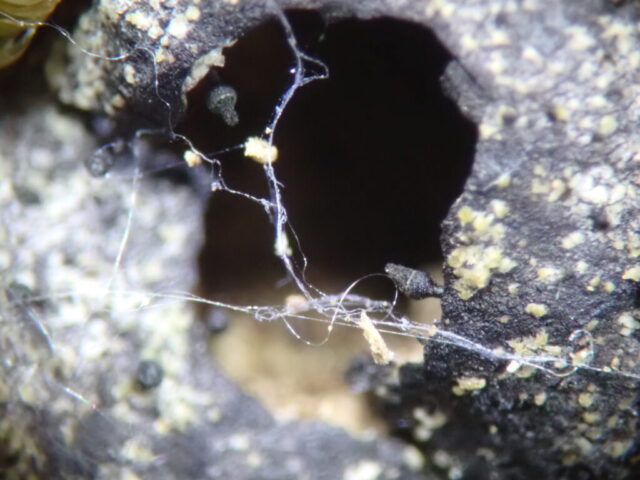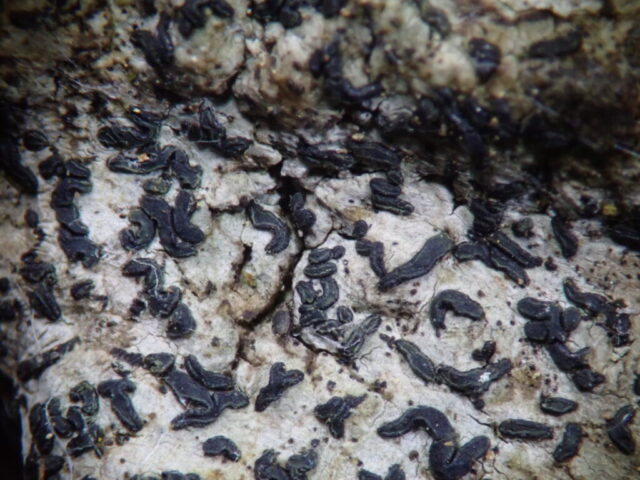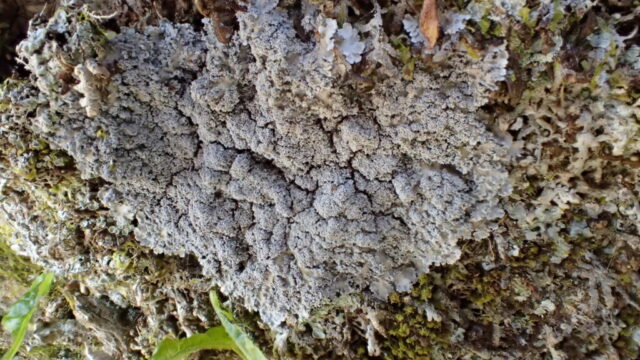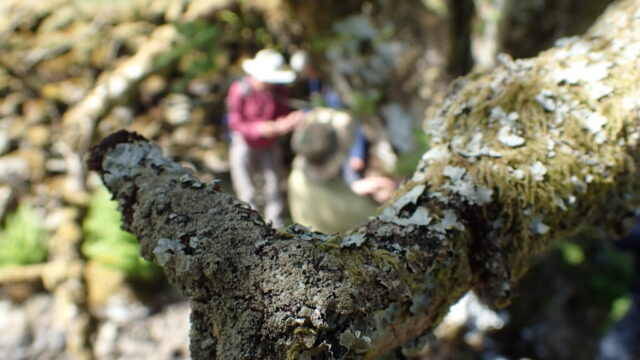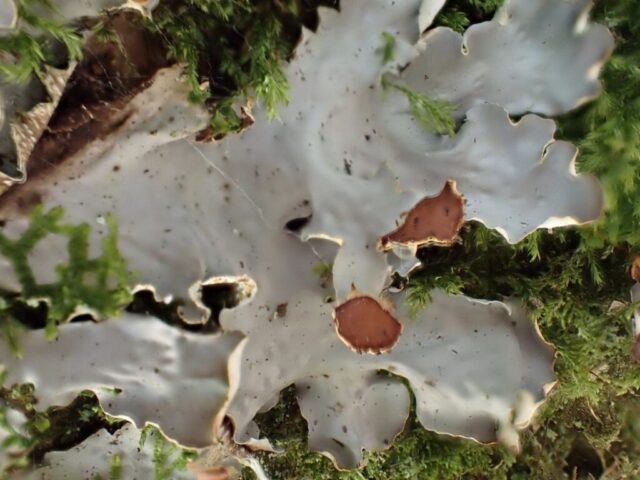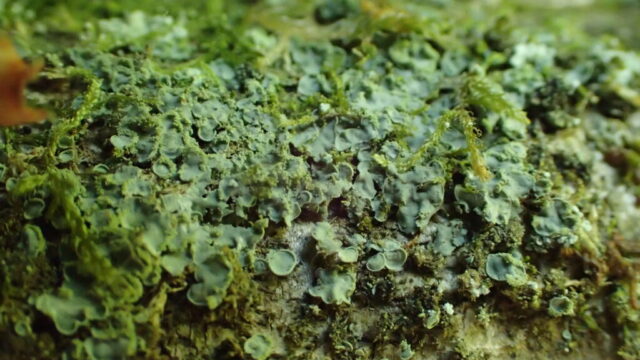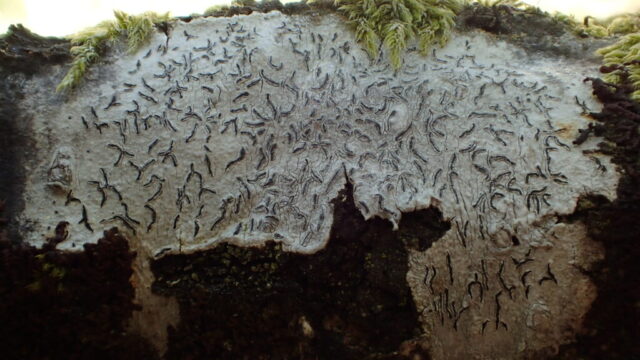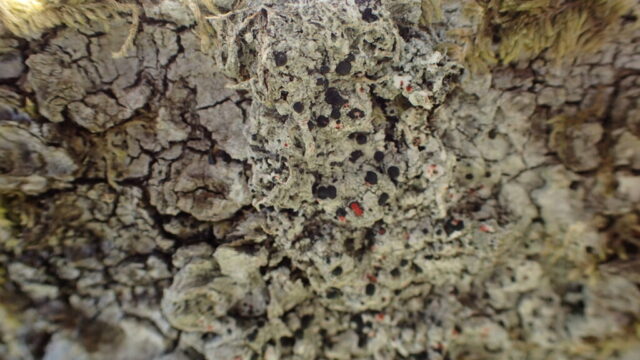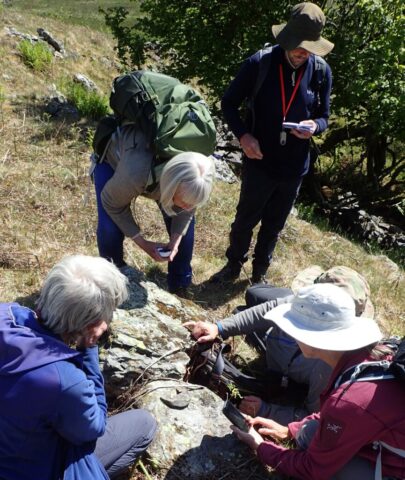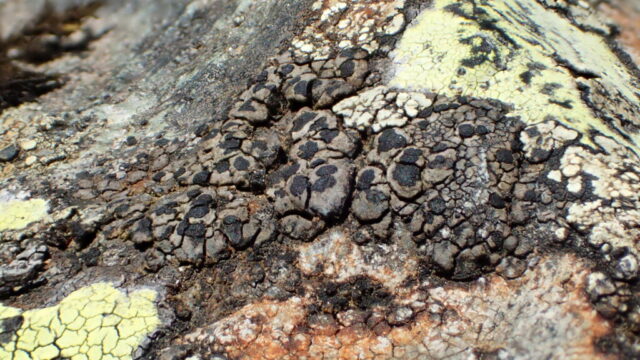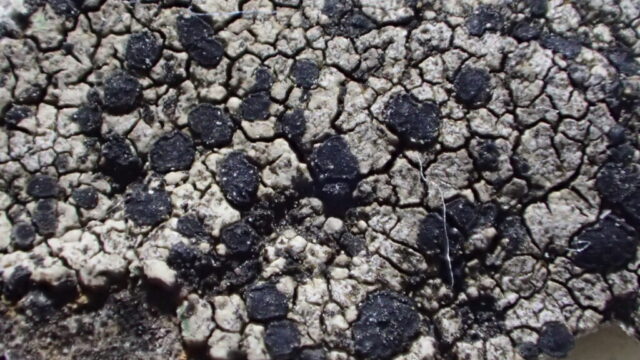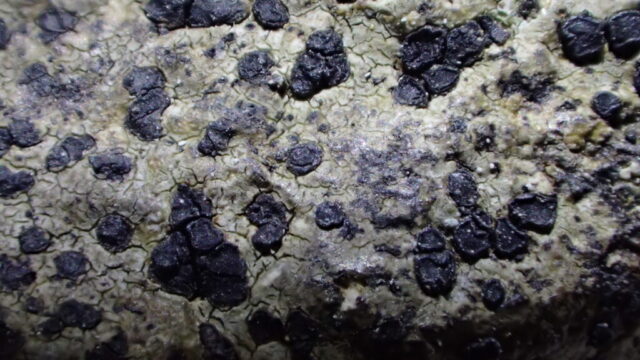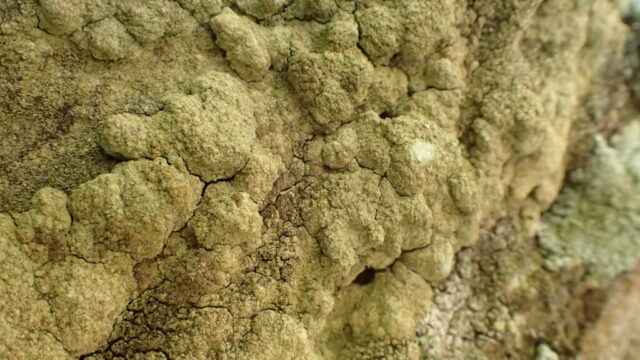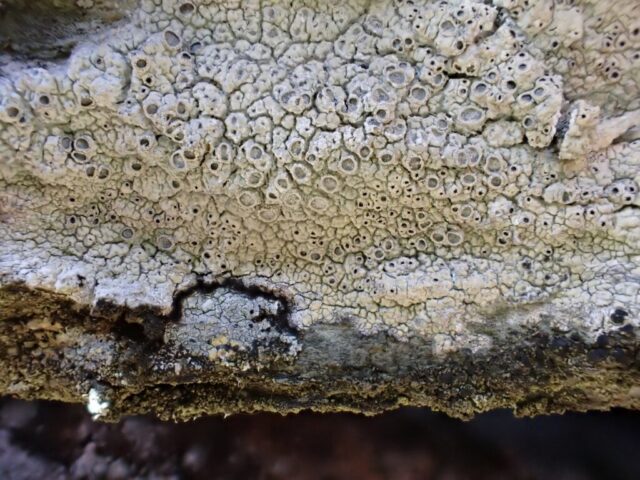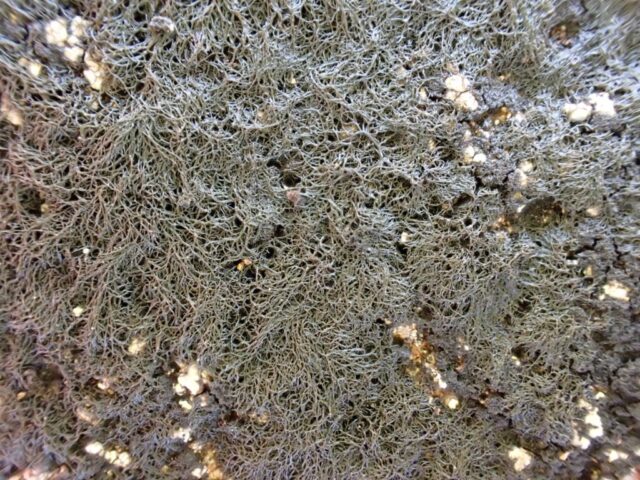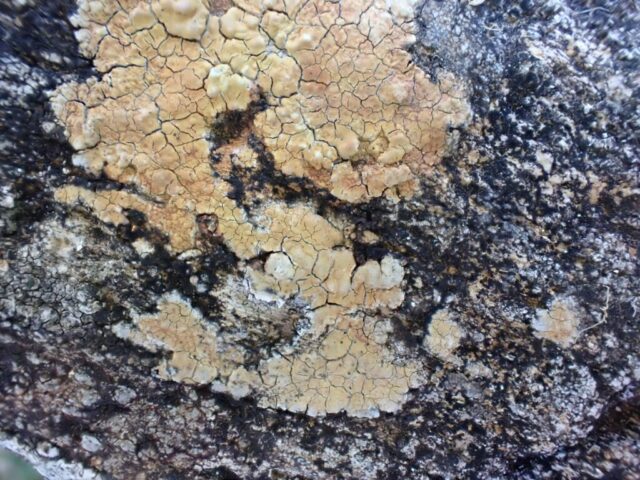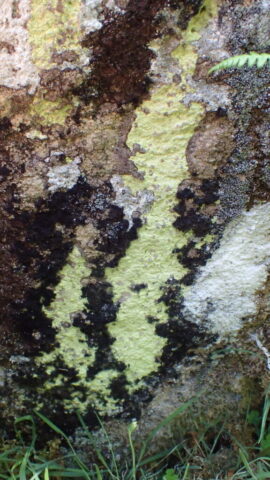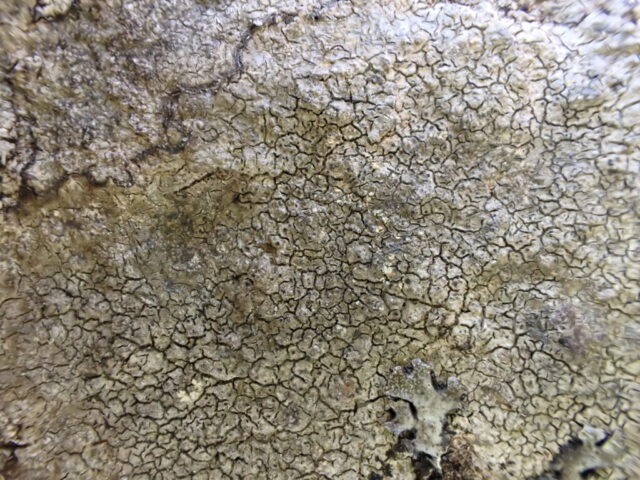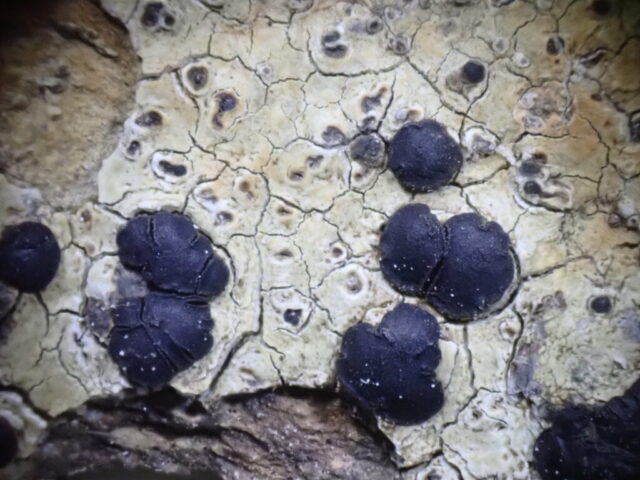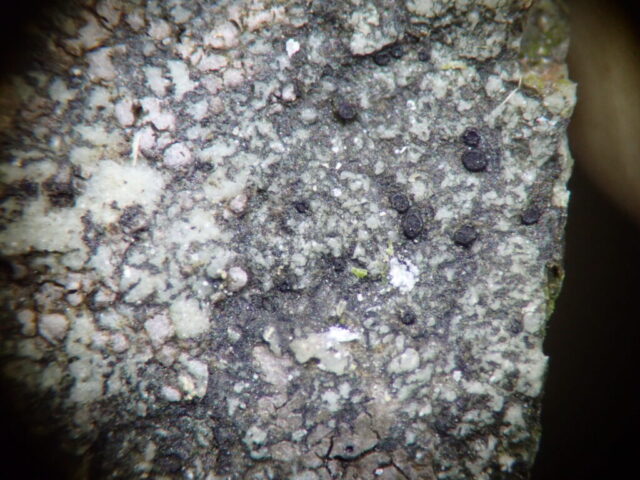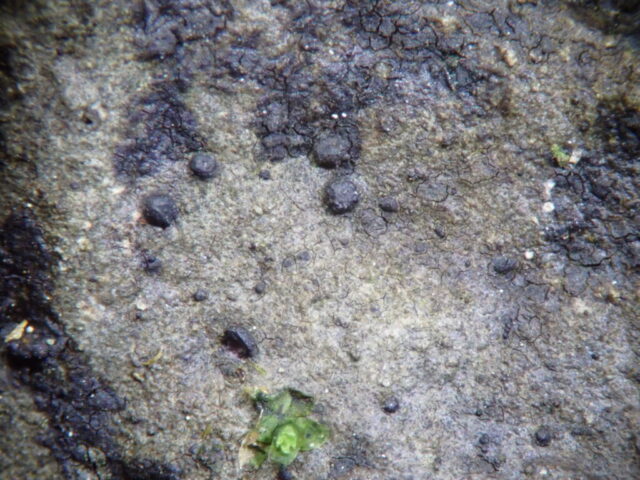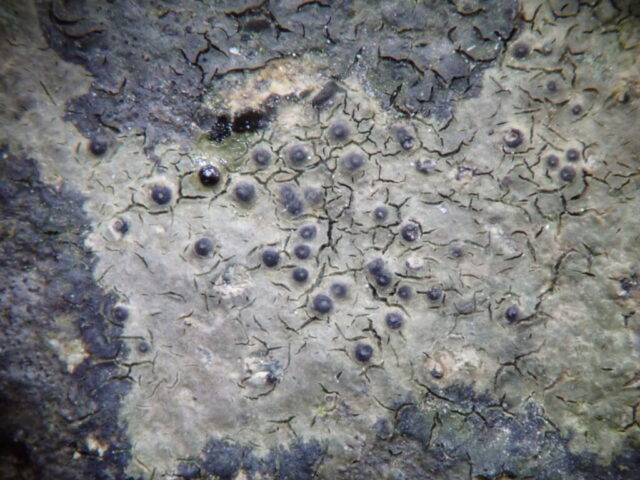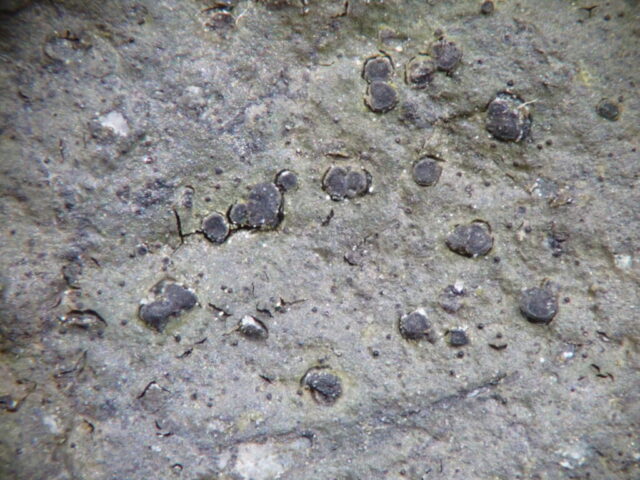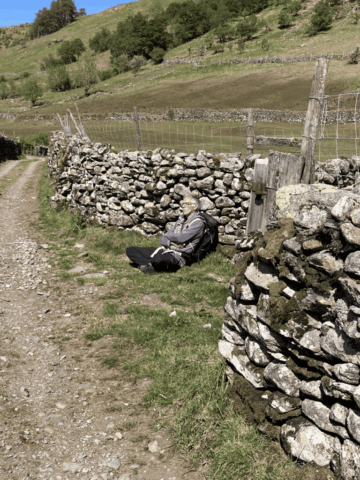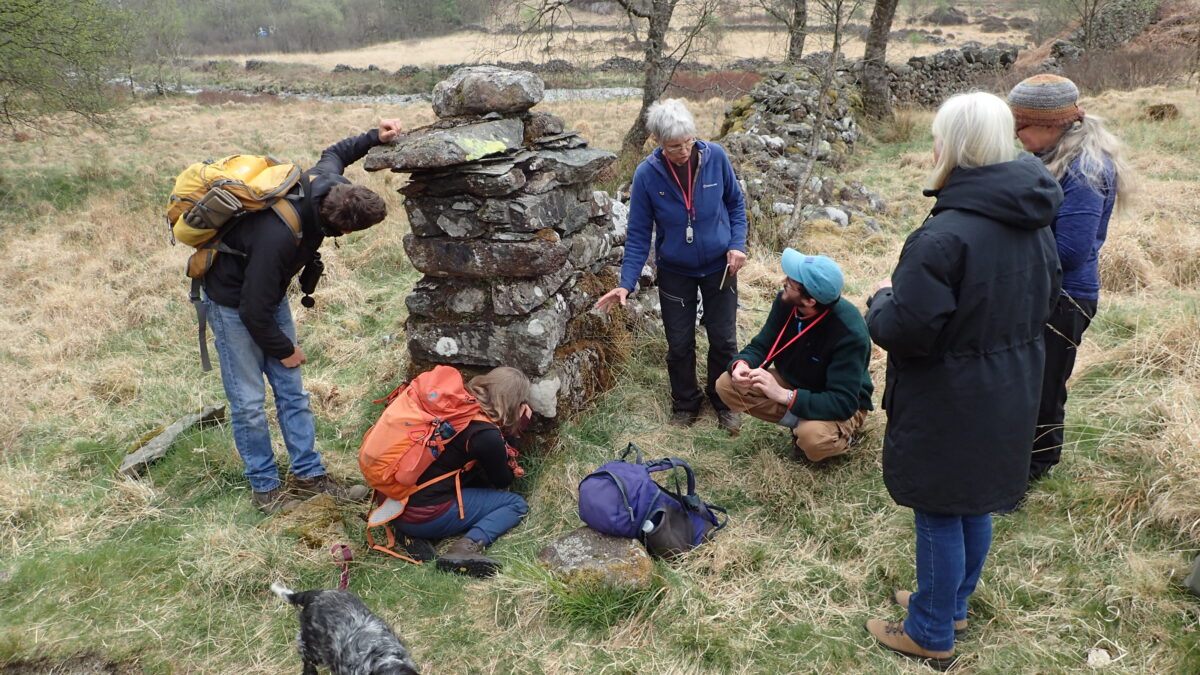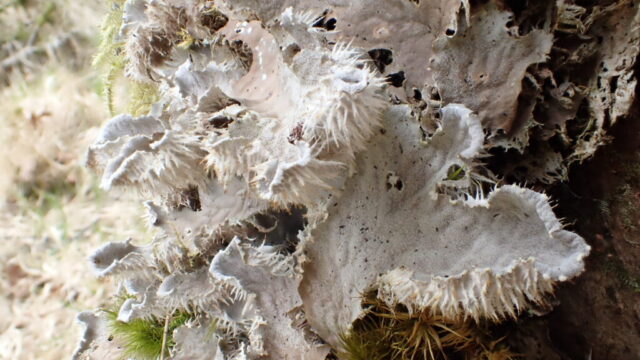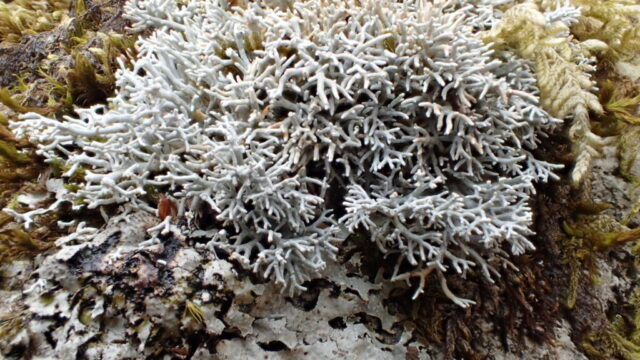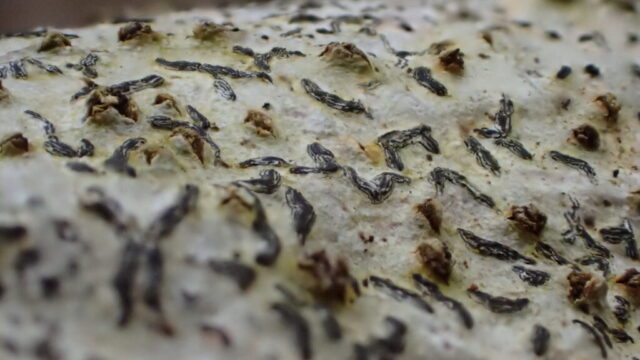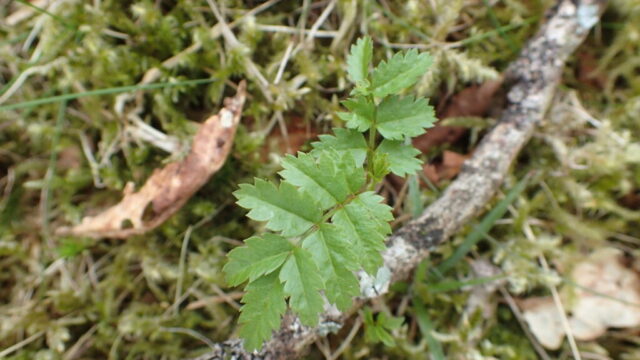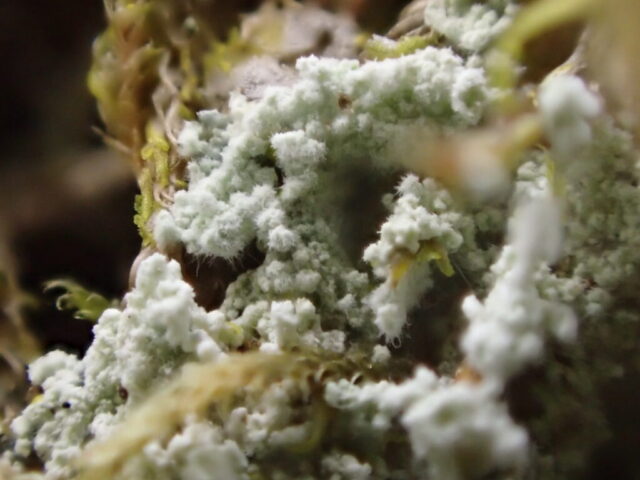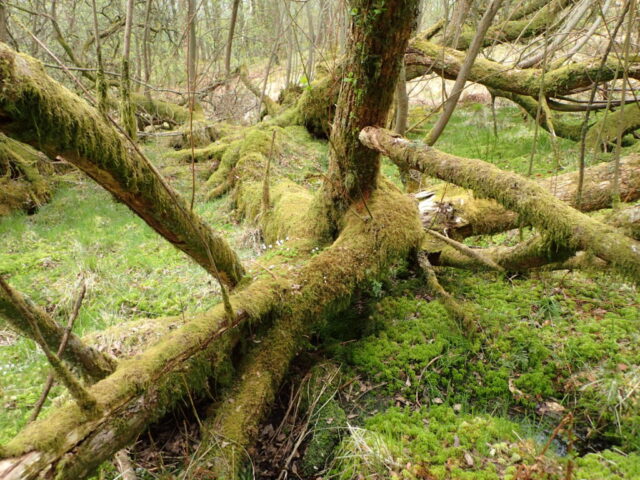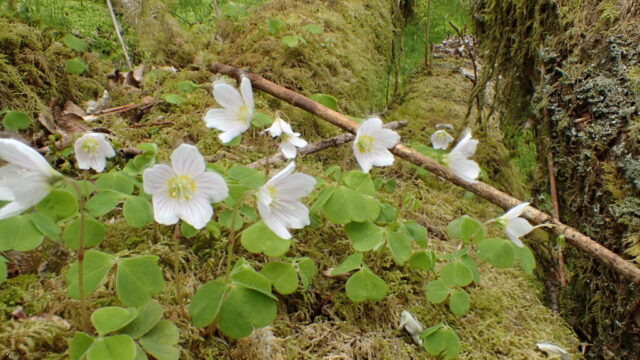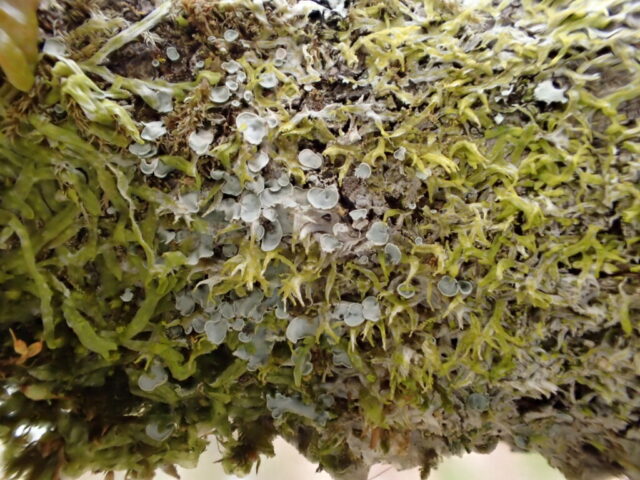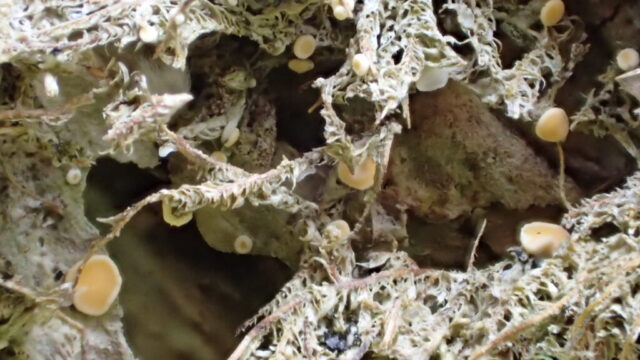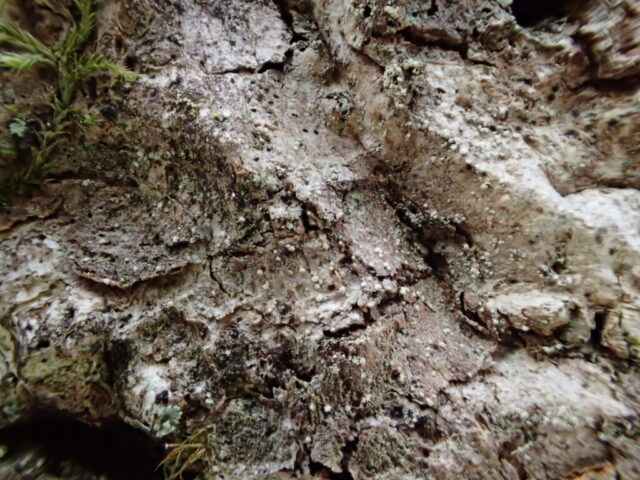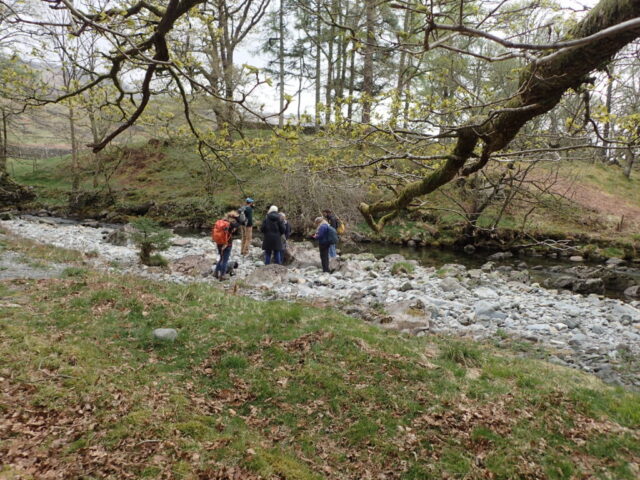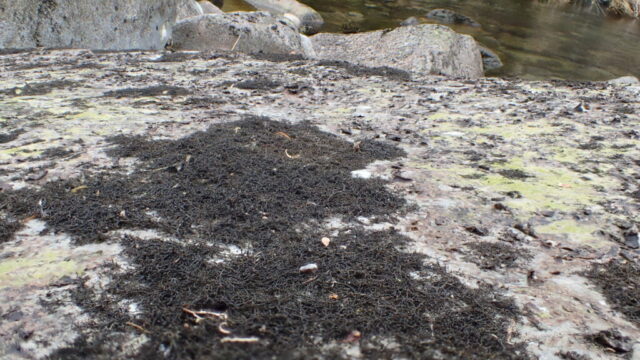We met in a layby just north of Glenridding, and stepped into winter. Brrr! It was windy too. But a quick stroll along the road warmed us a little and then we were into the wood and the wind was forgotten. The bryo folk sped off upslope, leaving just us three lichenologists zig-zagging slowly uphill.
For some reason, there’s been relatively little recording of the lichens in Glencoyne Wood, despite it being close by the relatively well-known hotspots of Glencoyne Park, Aira Force and Yew Crag. Chris and Caz’s recce had included the northern side, overlooking the delightfully-named Seldom Seen. They had found Ricasolia virens, Pachyphiale carneola and Nephroma parile. So I was hoping for a bit of Lobarion. The thick-trunked old Oaks at the bottom of the slope looked promising.
Quickly, we found Thelotrema– the first I looked at had yellow under the apothecia and went red with K so I called it as T. lueckingii. There was lots of Thelotrema. Lots and lots. Other white splats on the mostly wet trunks included Pertusaria pertusa and P. hymenea. Foliose trunk species included Parmelia saxatilis and Melanelixia glabratula. The Hazels had some good thalli of Graphis scripta s. lat, and a Birch had Hypotrachyna laevigata. But mostly the trees were Oaks, thick-trunked Oaks with more Thelotrema than I could shake my stick at. But it wasn’t on all the oaks: on one “Thelotrema-free” tree we found- and discussed- the white pycnidia of Micarea stipitata. And were those apothecia?
Caz had found Leptogium cyanescens in 2019 on the lowest outcrop. Close examination found two other jelly lichens- Collema glebulentum and Scytinium lichenoides, but no cyanescens. Peltigera horizontalis was found just along the crag. We edged our way up and had lunch.
Higher up it felt a little drier, and a little lighter. Open areas had Cladonia portentosa and furcata growing on the mosses. The suggestion that we should measure Cladonia patches in Reindeer portions fell on stony ground. Sphaerophrous globosus started appearing on the rocks- and even the occasional tree. Some outcrops were really covered in coral!
The drier side of the Oaks began to have more Lecanactis abietina: the purpley-grey thallus has white-tipped pycnidia that go red with C. There was Chrysothrix candelaris too- yellow streaks that look like spray paint. A loud rush surprised me- dozens of Wood pigeons landed in the canopy nearby. Nuthatches called.
Higher still there was a rosette on the moss on the ground- Hypotrachyna taylorensis. Always an interesting species as it has no fruiting bodies or apparent asexual reproductive structures. It must spread by just having bits break off. This was a healthy looking patch but…where had it come from? We looked around suspiciously, but failed to find the source.
A last push up the slope gave lovely views along Ullswater. There was more Mycoblastus sanguinarius here, in places looking really red. There was Hypocenomyce scalaris and Parmeliopsis hyperopta– acid bark specialists- on the conifers. We found our first Pseudevernia furfuracea of the day too- this didn’t go red with C, so was var. furfuracea. In contrast to the lack of regeneration lower down there were prolific thickets of young Larch up here. Presumably they are not so palatable to the marauding Herdwicks that seem to call the wood home.
But it was getting darker. Our descent was quicker, if significantly more jolted by rocks and snagged by Brambles. There was more Peltigera horizontalis growing on an Ash- we’d not seen many of these- and then my favourite find of the day: Cetrelia olivetorum. I’d never bothered with trying to work out which of the subspecies of this I had found before… but Caz suggested shining UV onto it and there was a beautiful purply white edging to the lobes from the soredia. Cetrelia cetrarioides it is then. Sadly, it was far too late and dark to be fiddling about trying to take a photo.
So, it was a good day. We found some good things. Glencoyne wood is definitely interesting. We found no Xanthoria and just one Physcia. We got up to 9 on the Upland Rainforest Index score, all from just one line taken on one side of the wood. The more acid-bark loving species contrasted with what had been found before on the north-facing slope. Will this be to do with exposure to pollution, or tree make-up, or better moisture retention on one side? Or is it something else entirely? We’ll just have to come back for a second look and see what the evidence suggests.
Text: Pete Martin
Photos: Chris Cant, Pete Martin, Caz Walker

